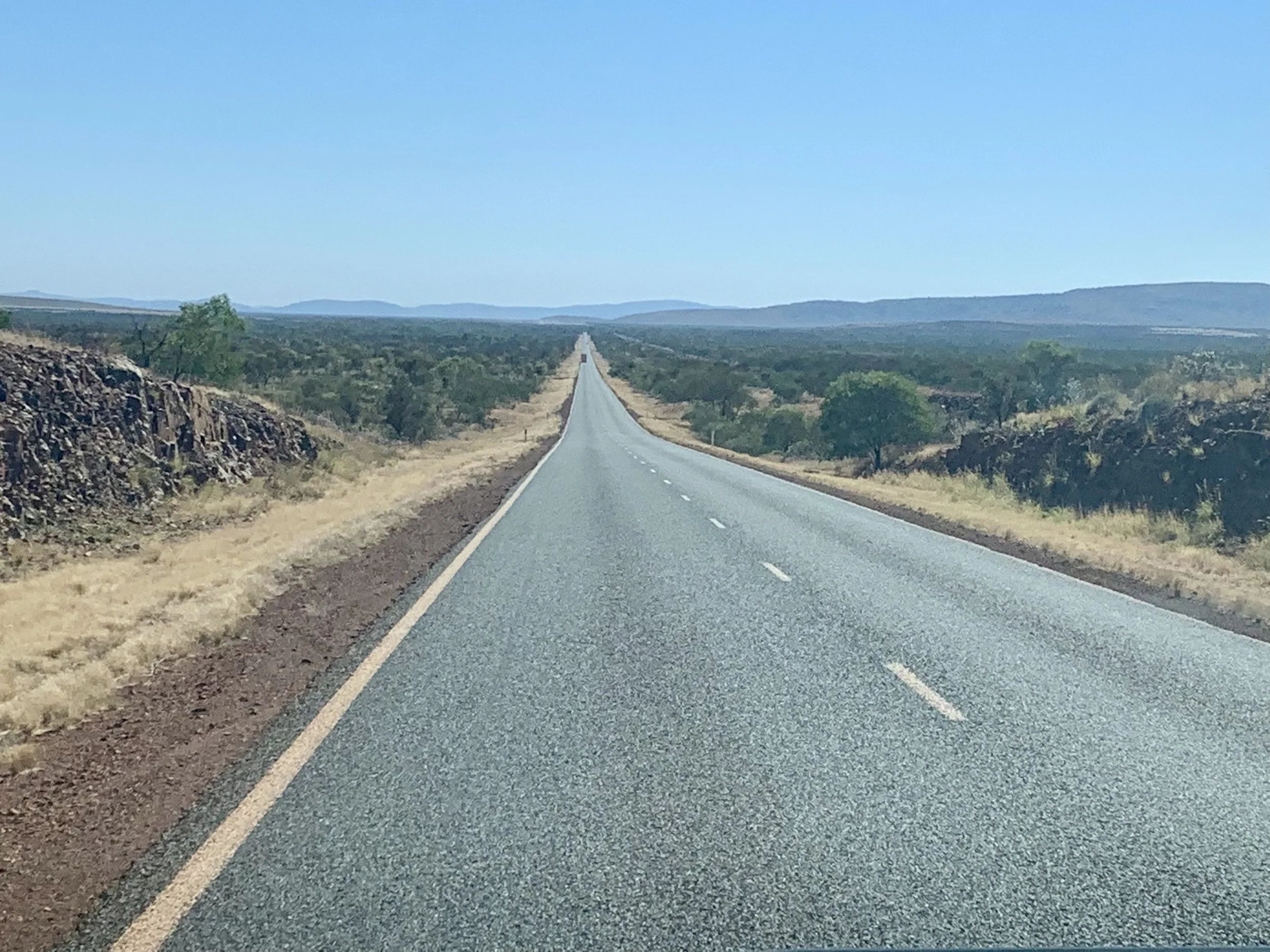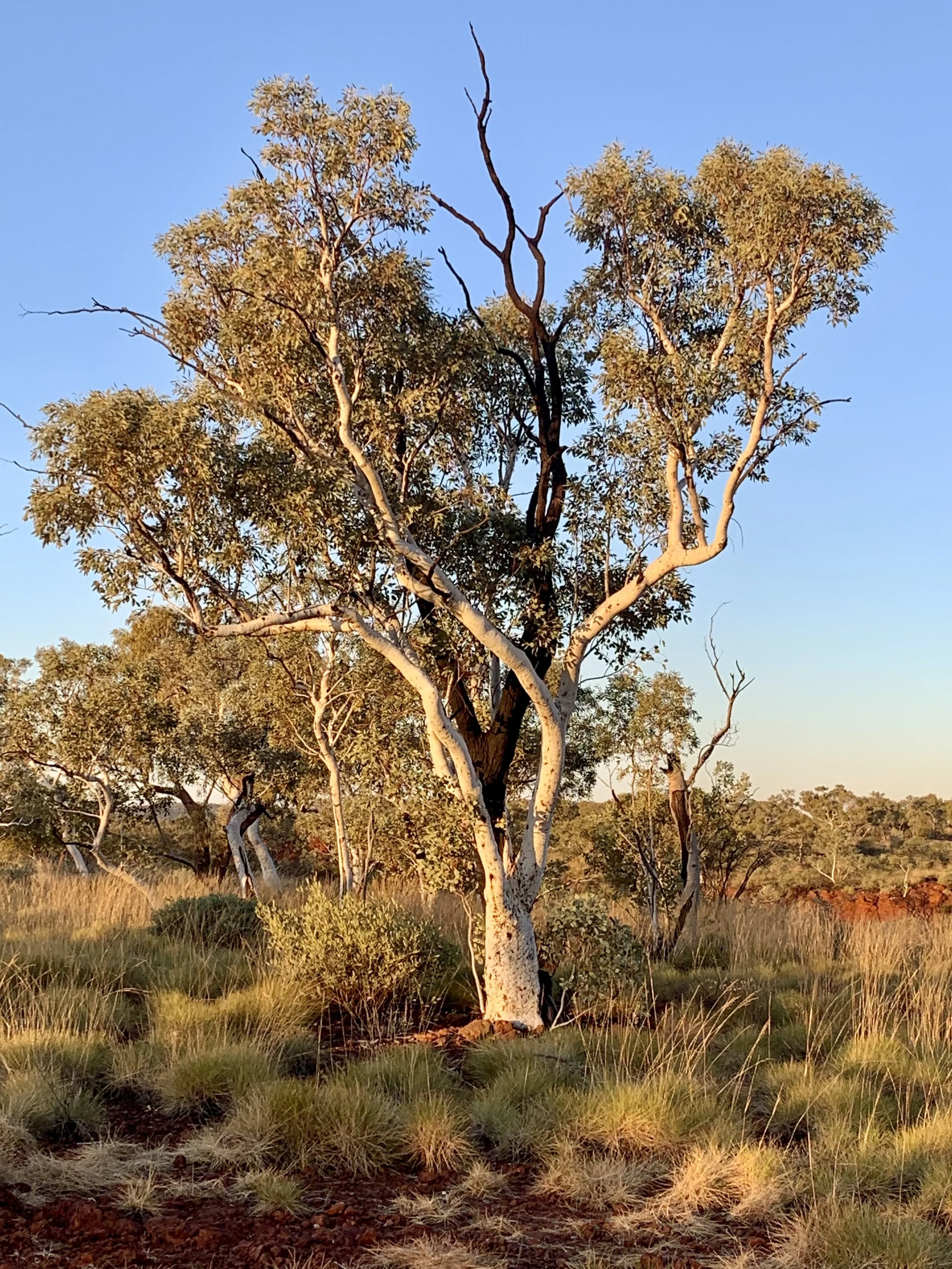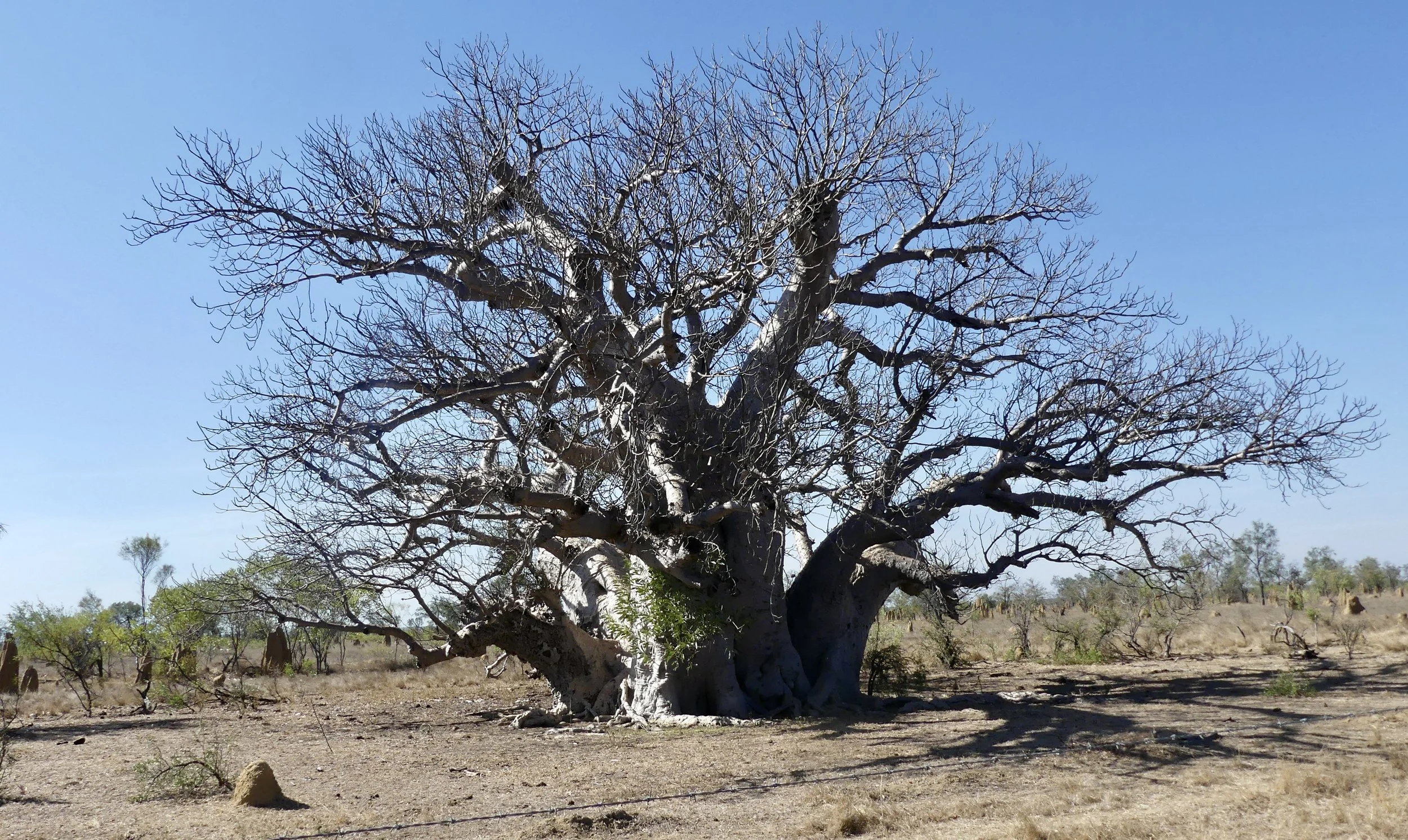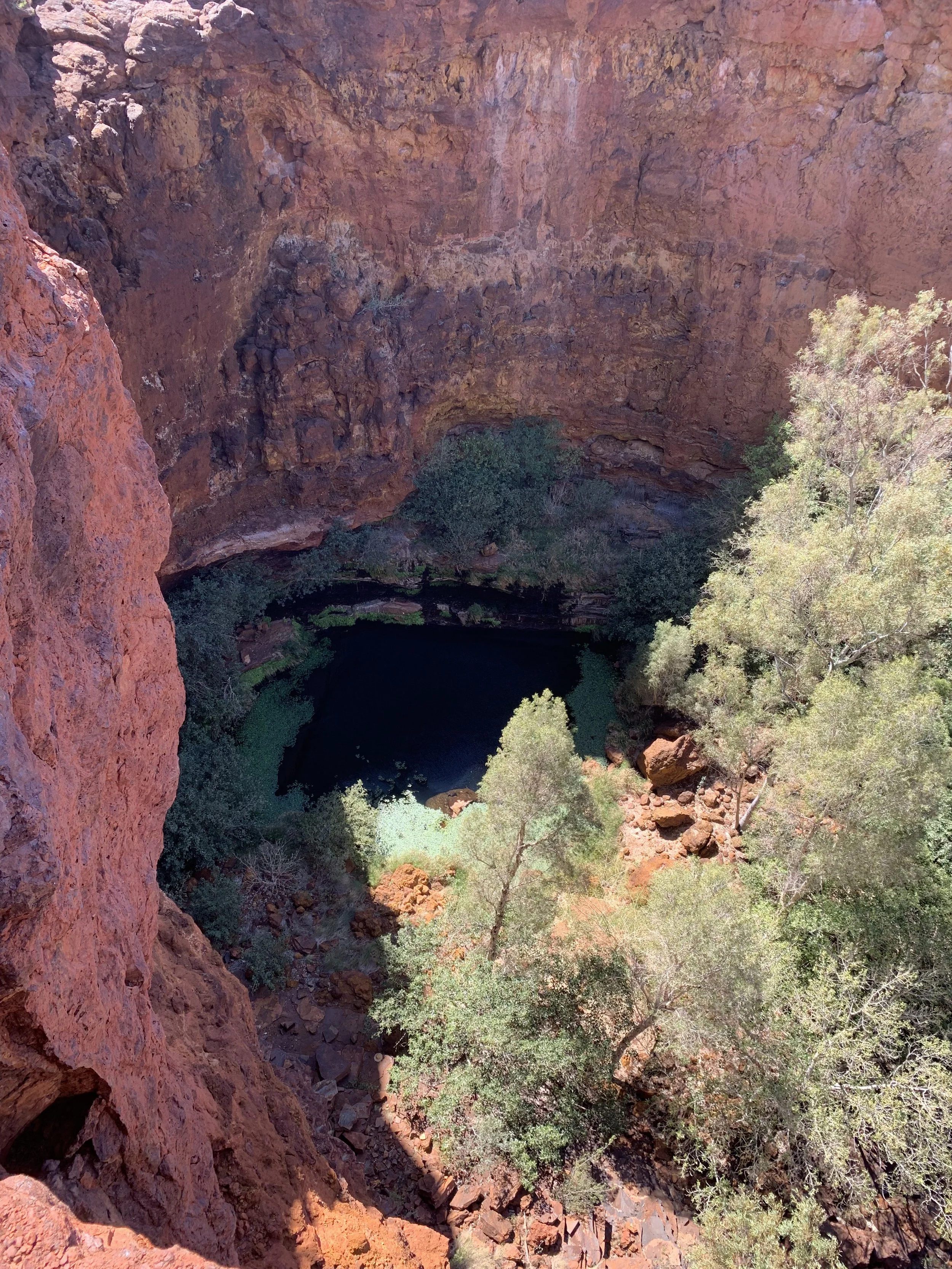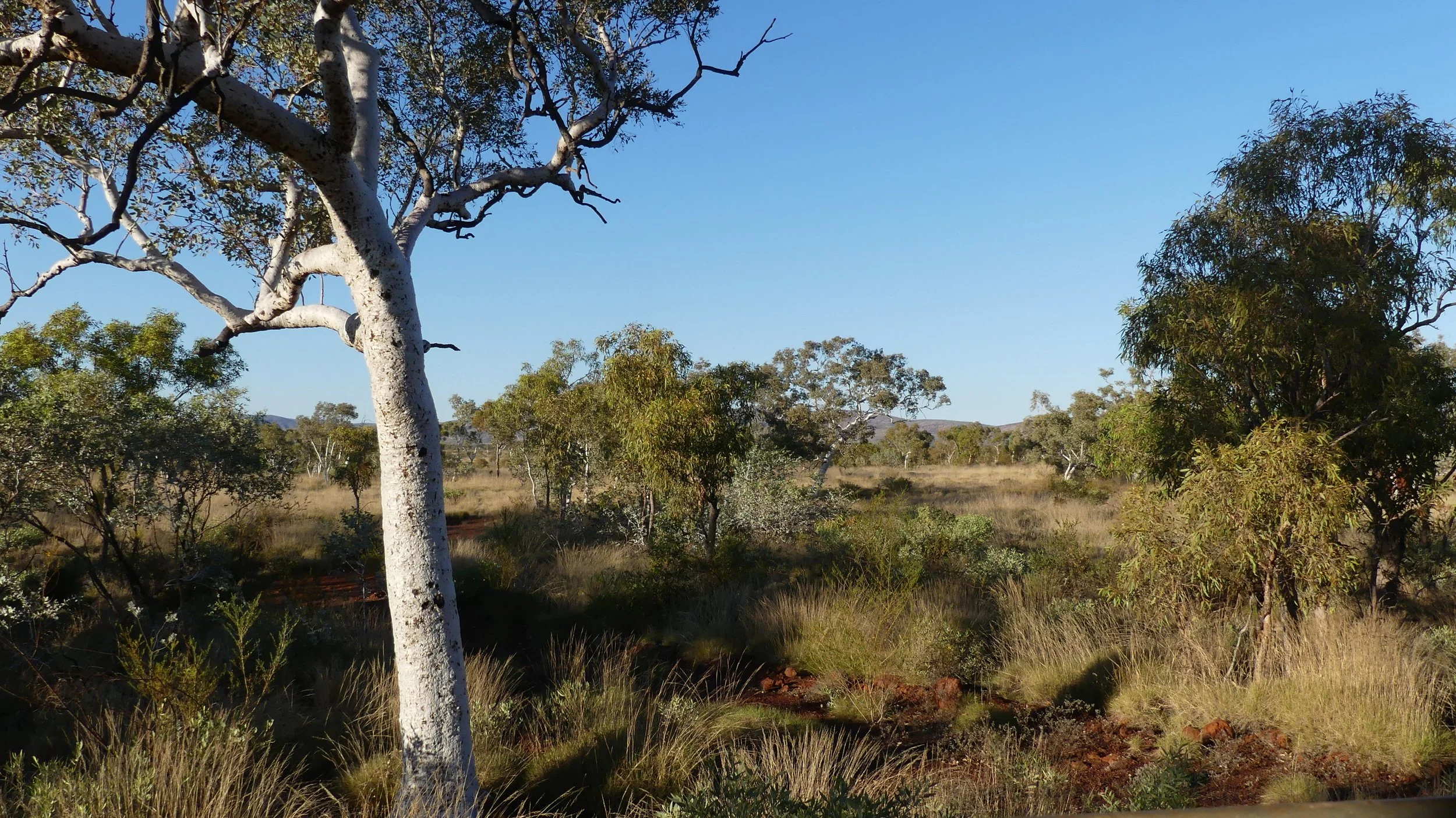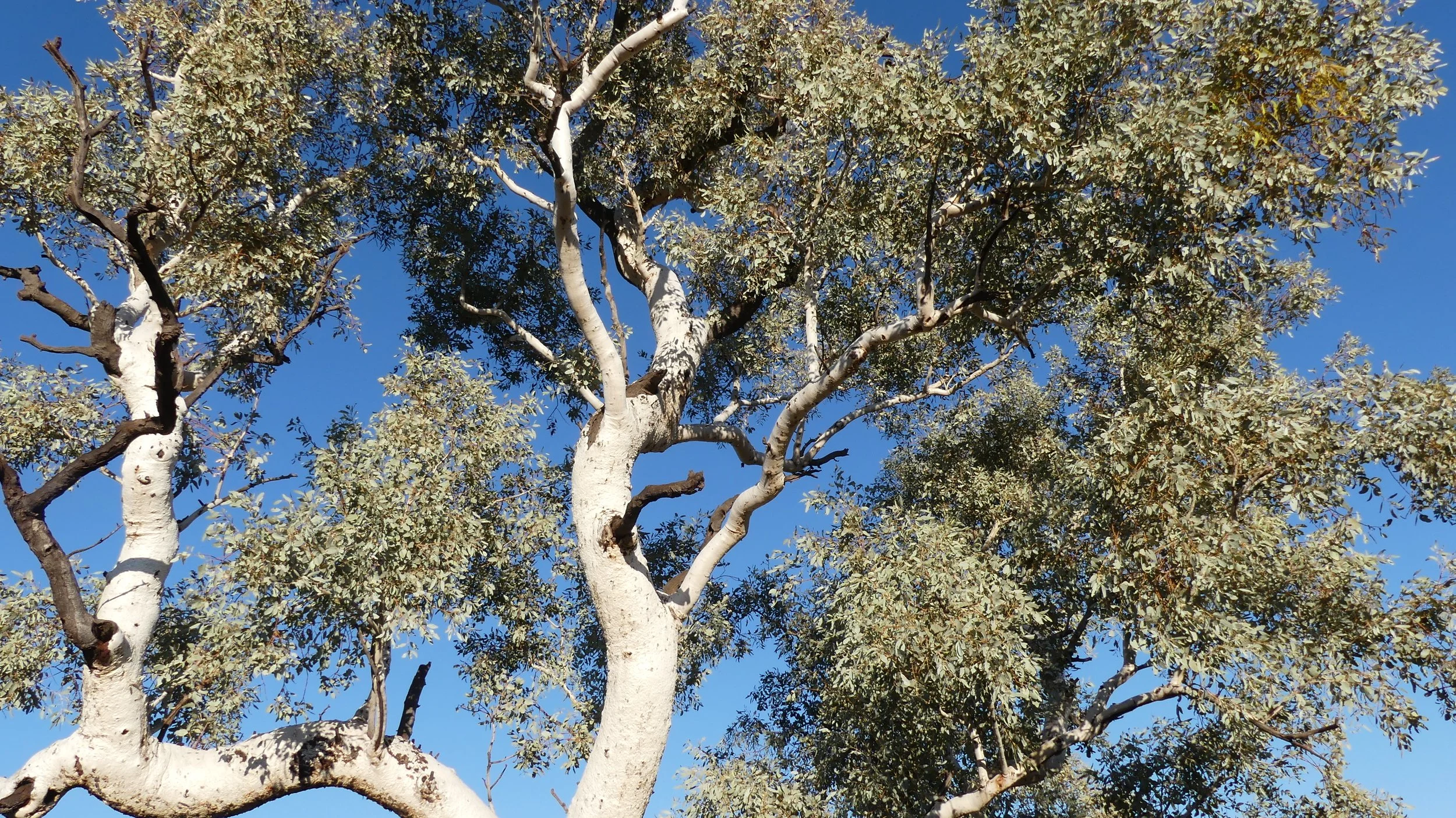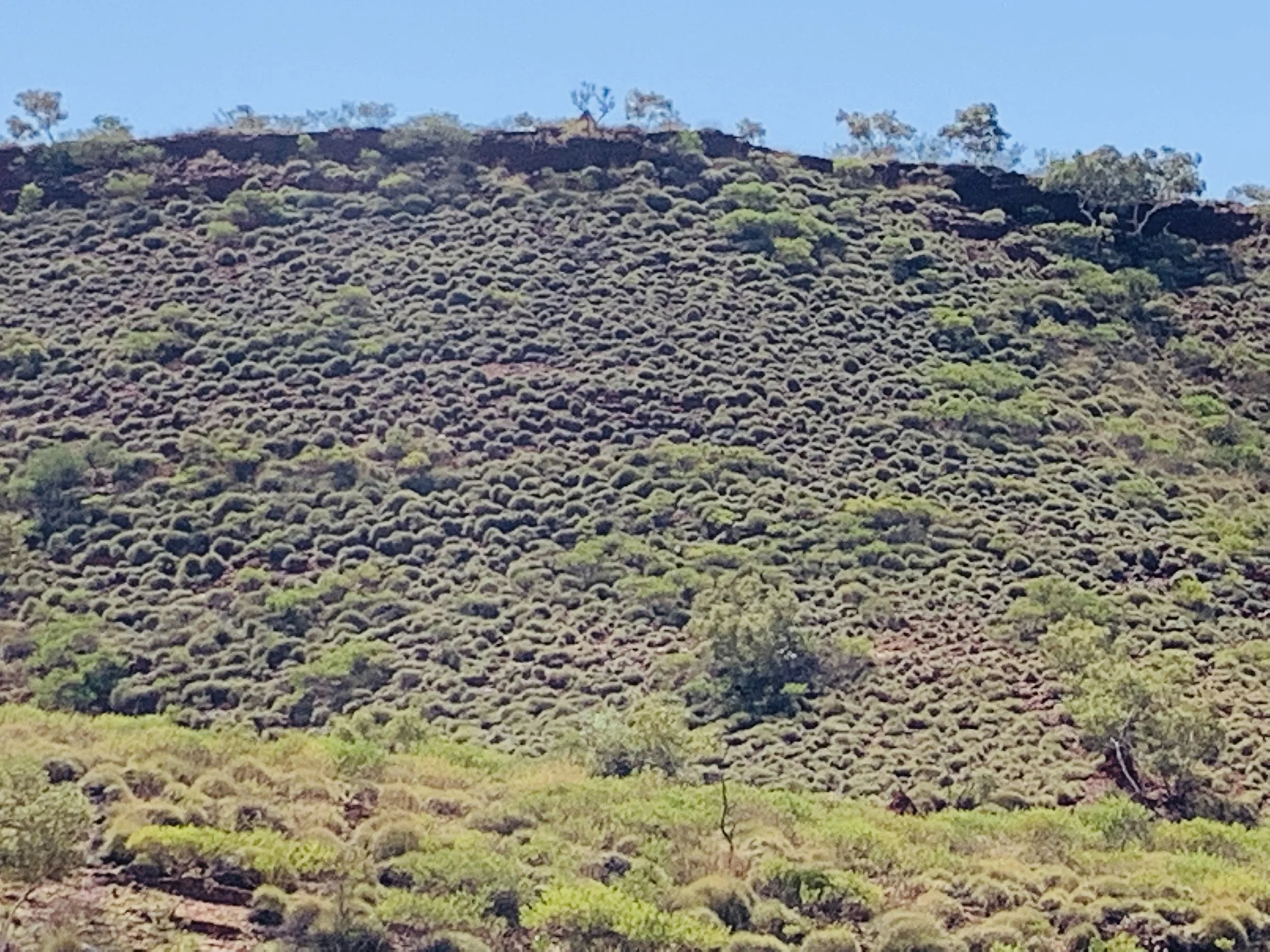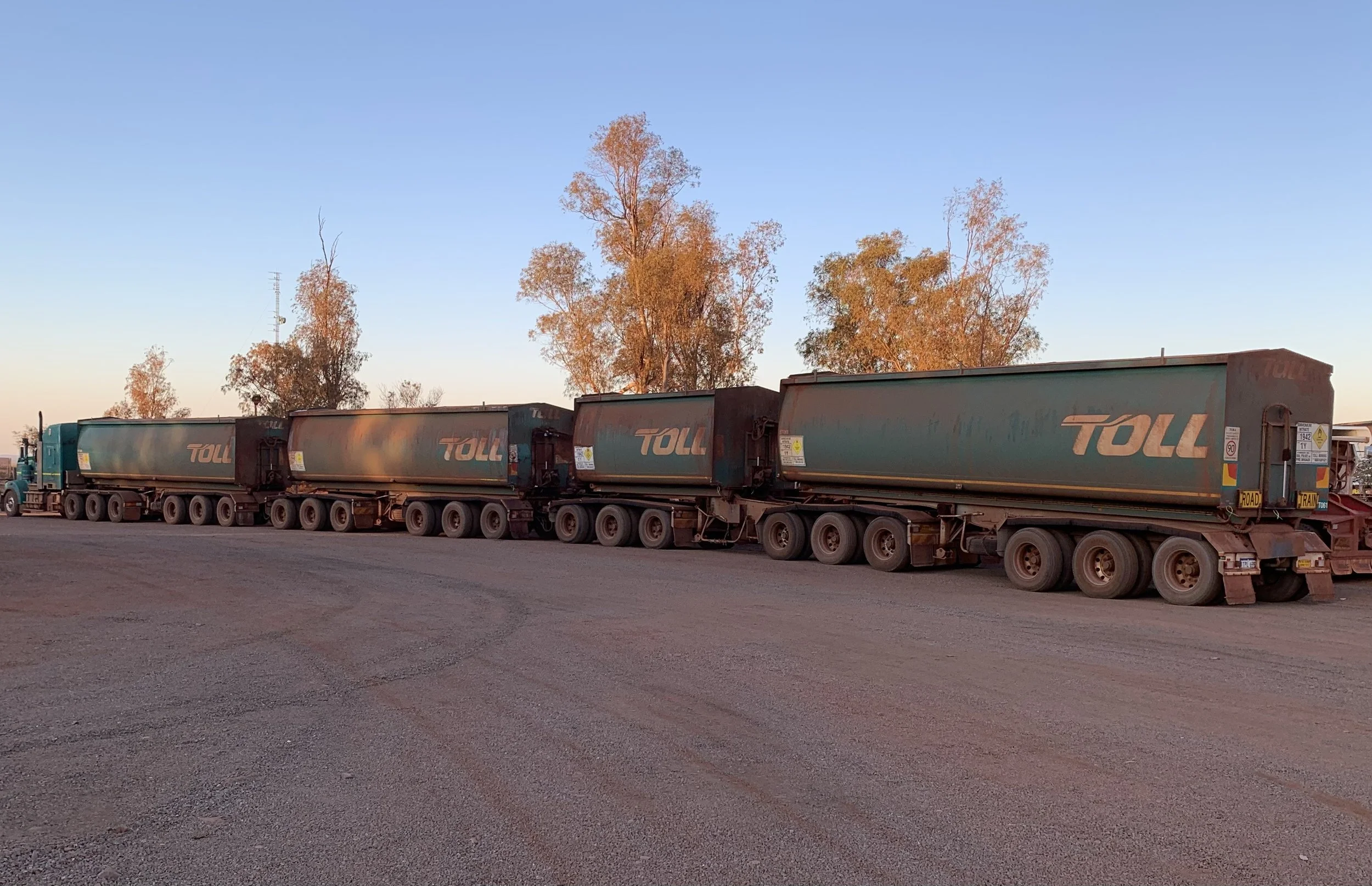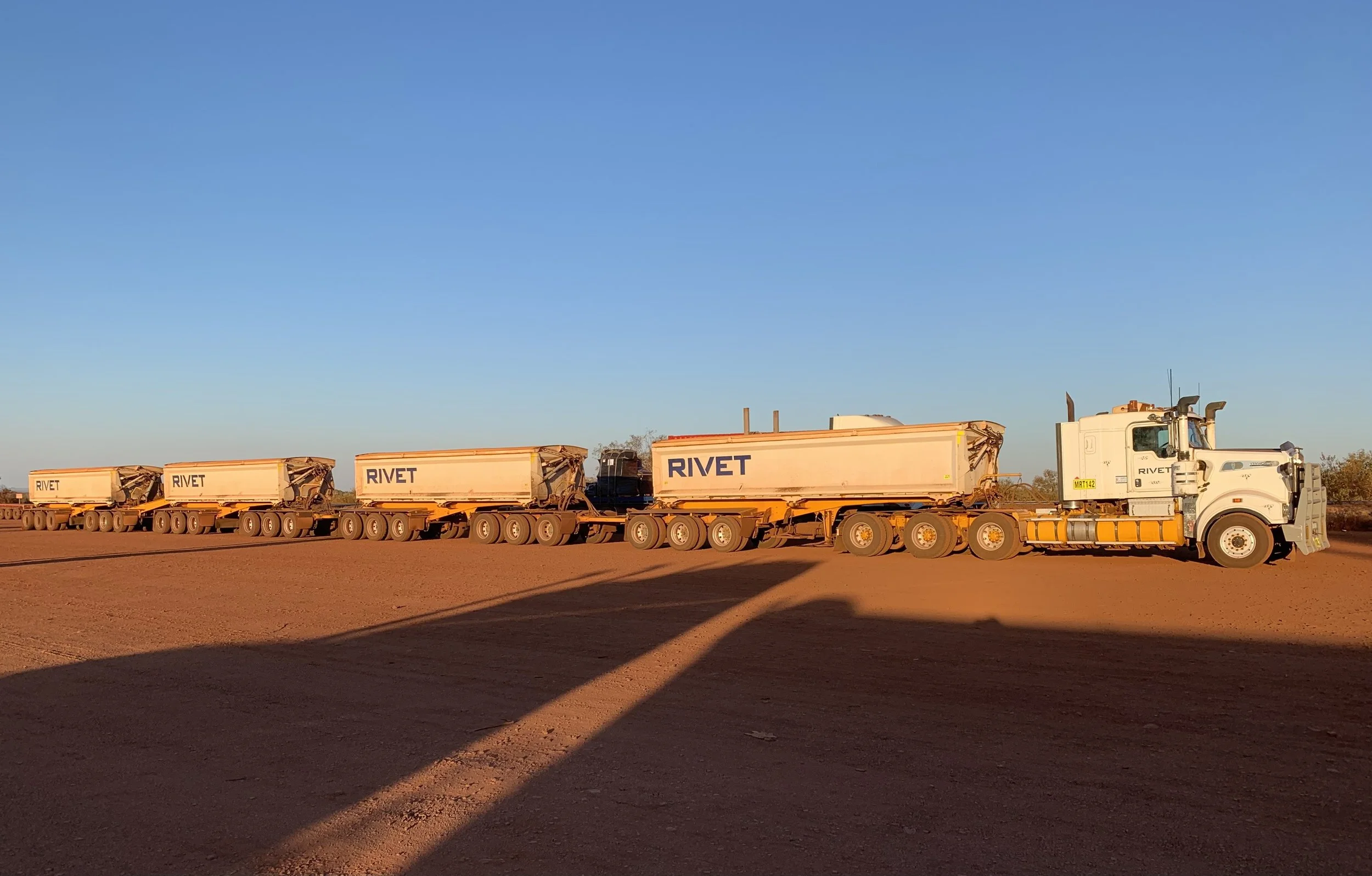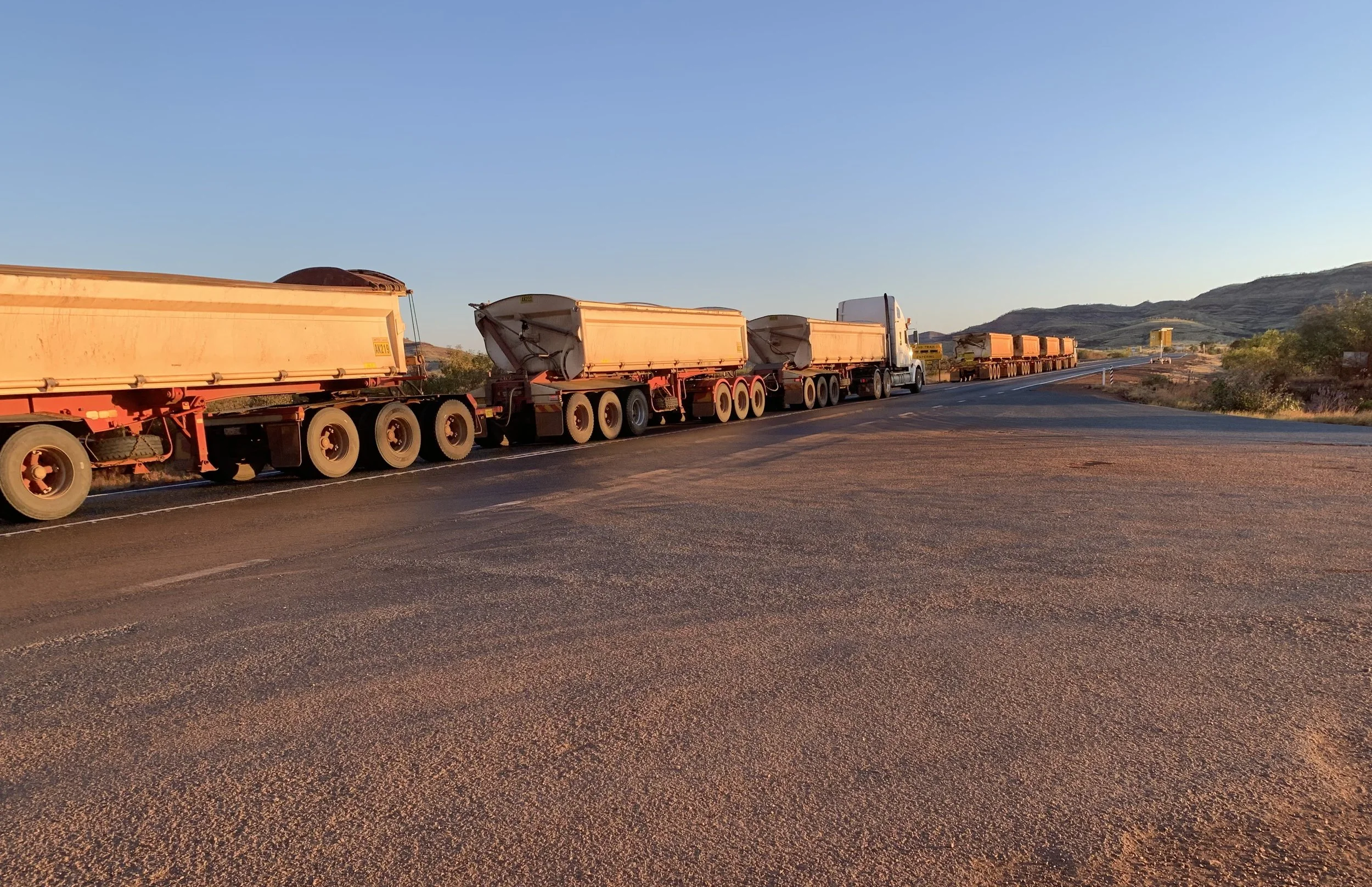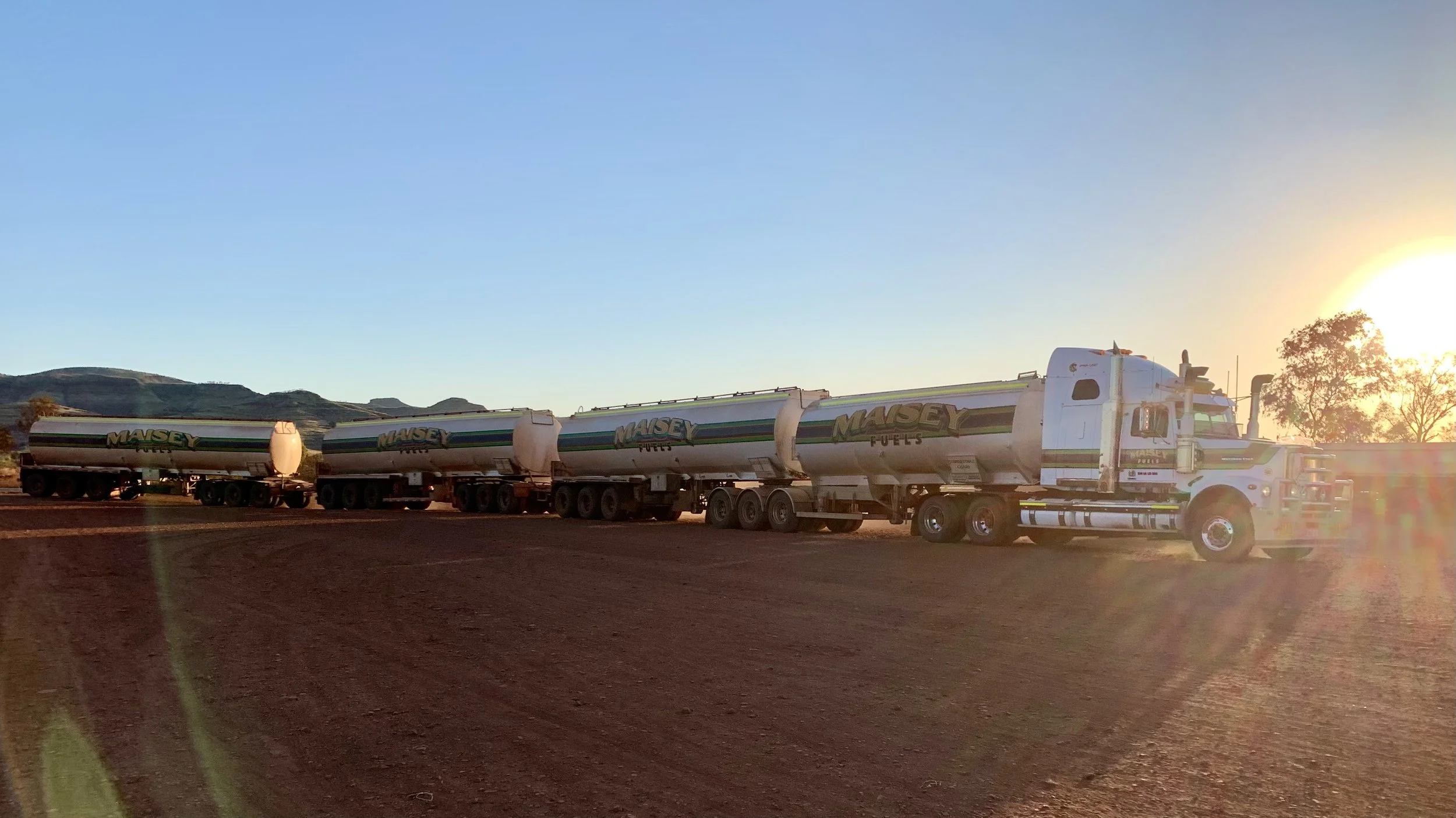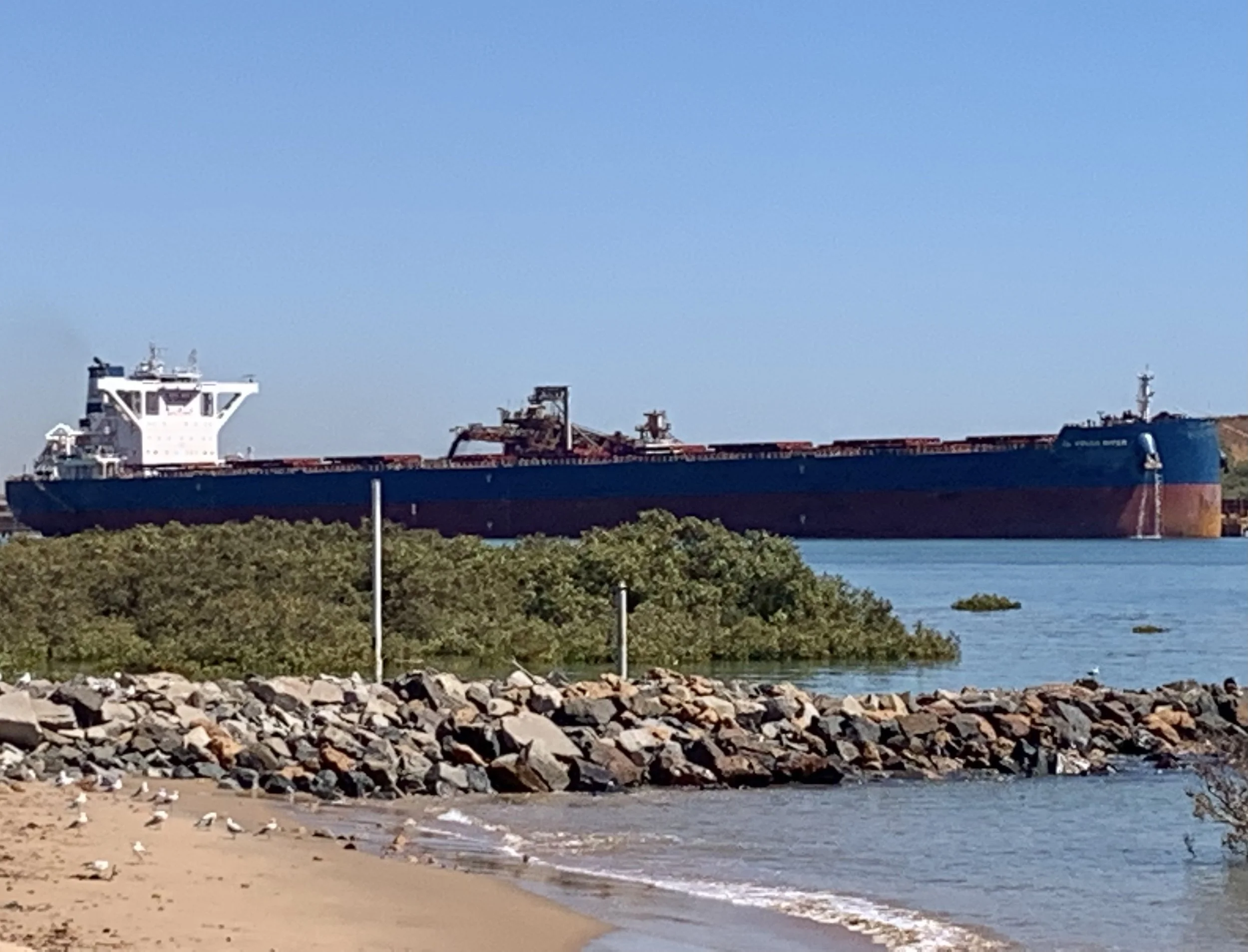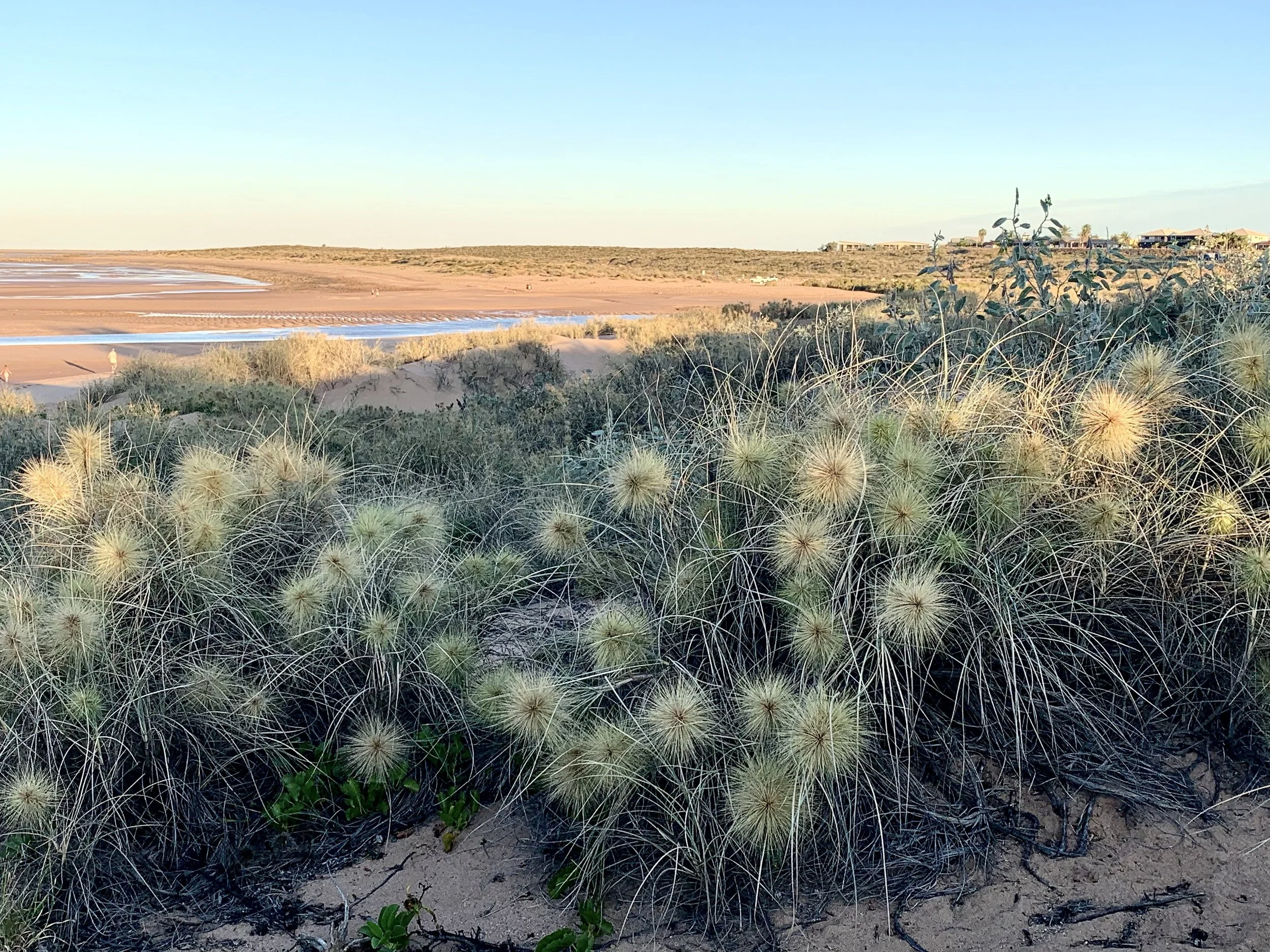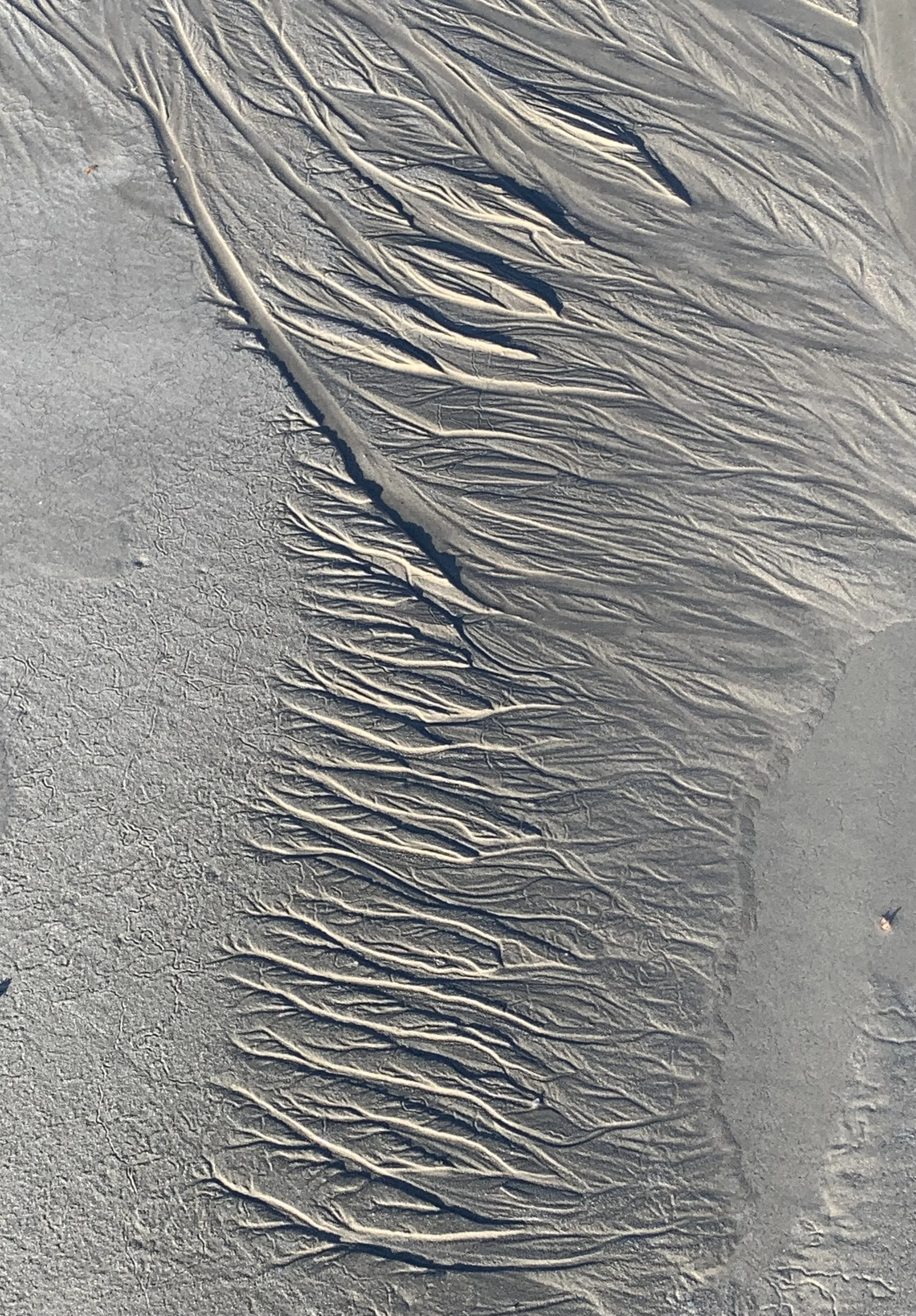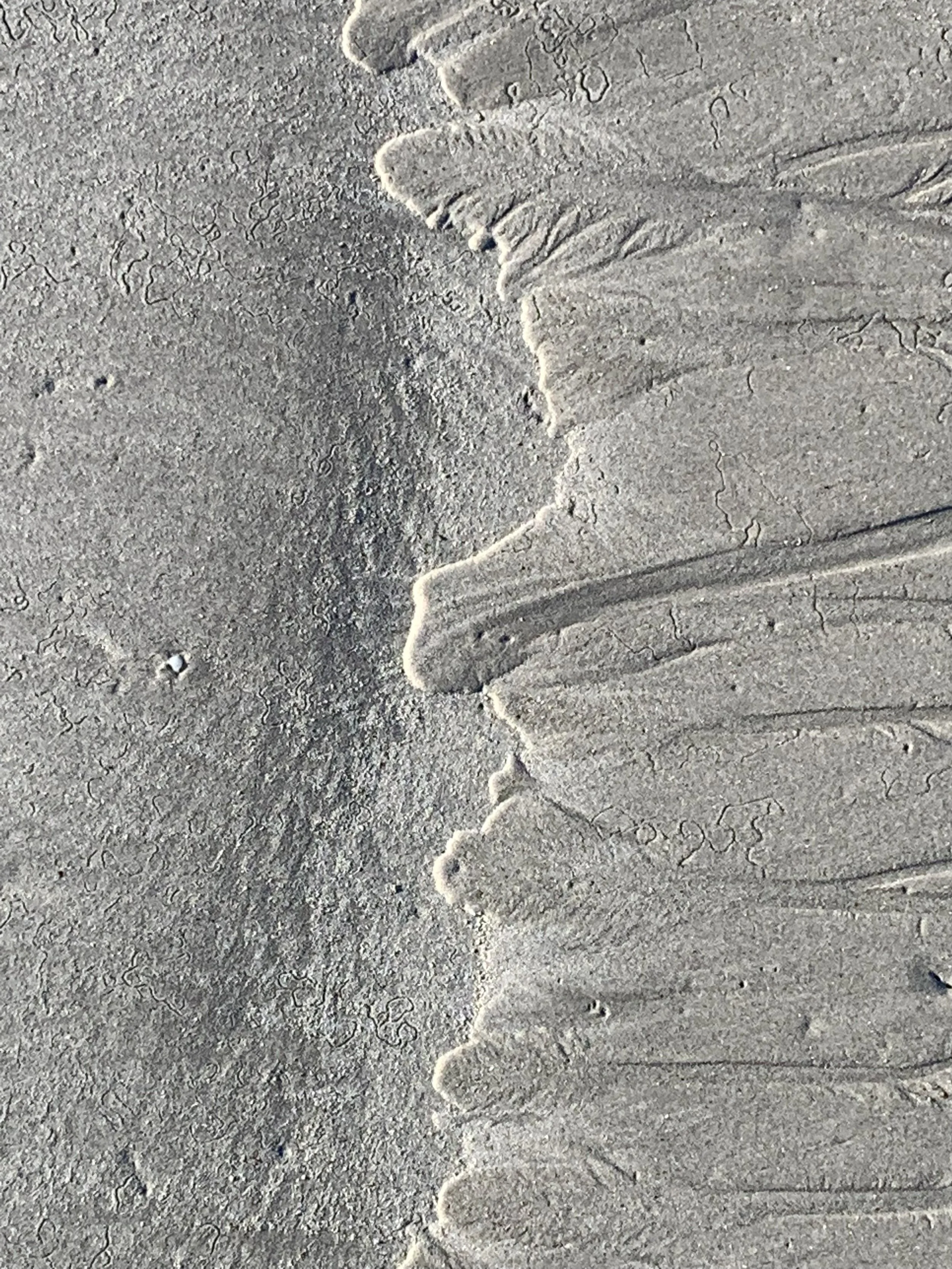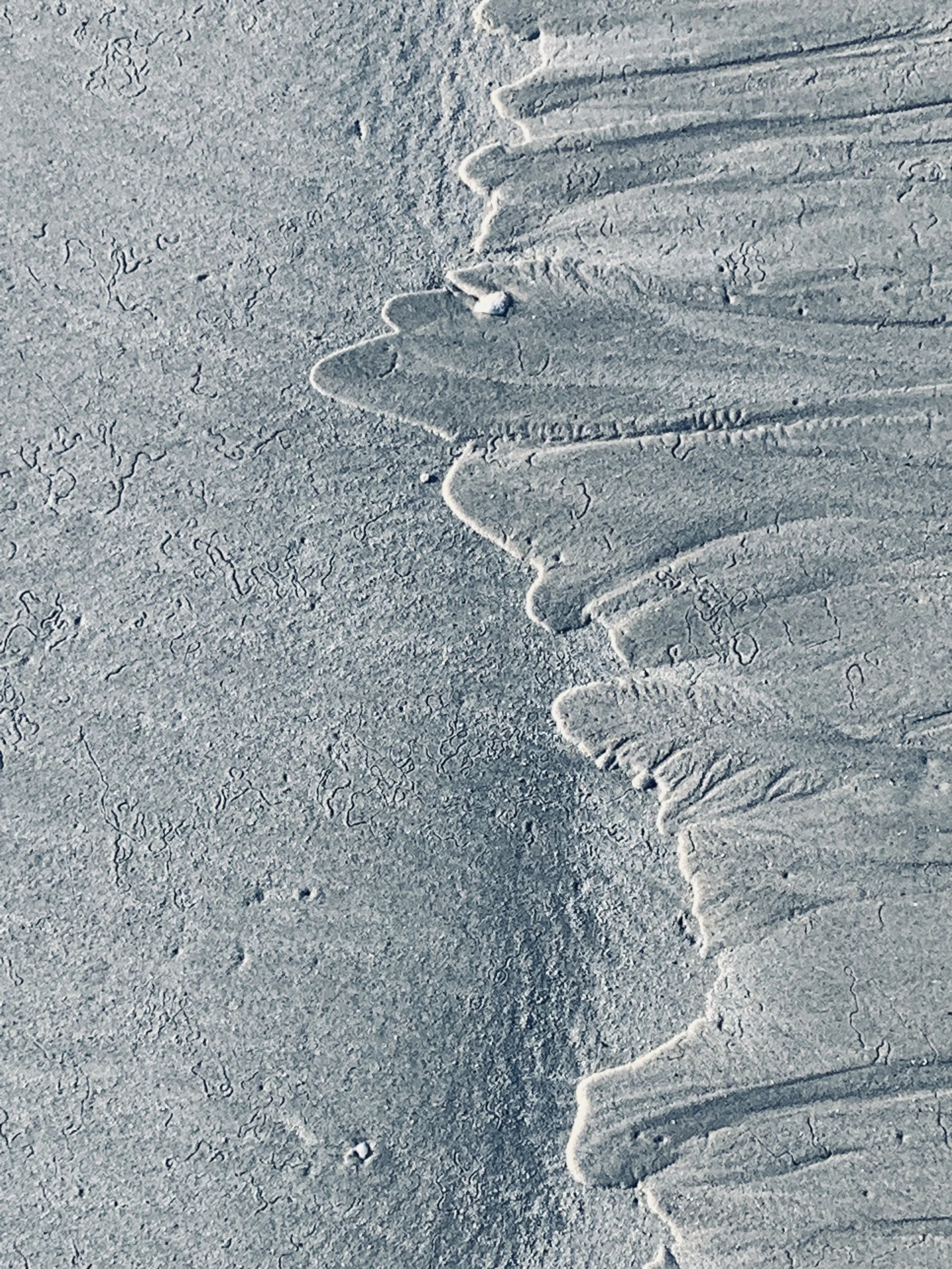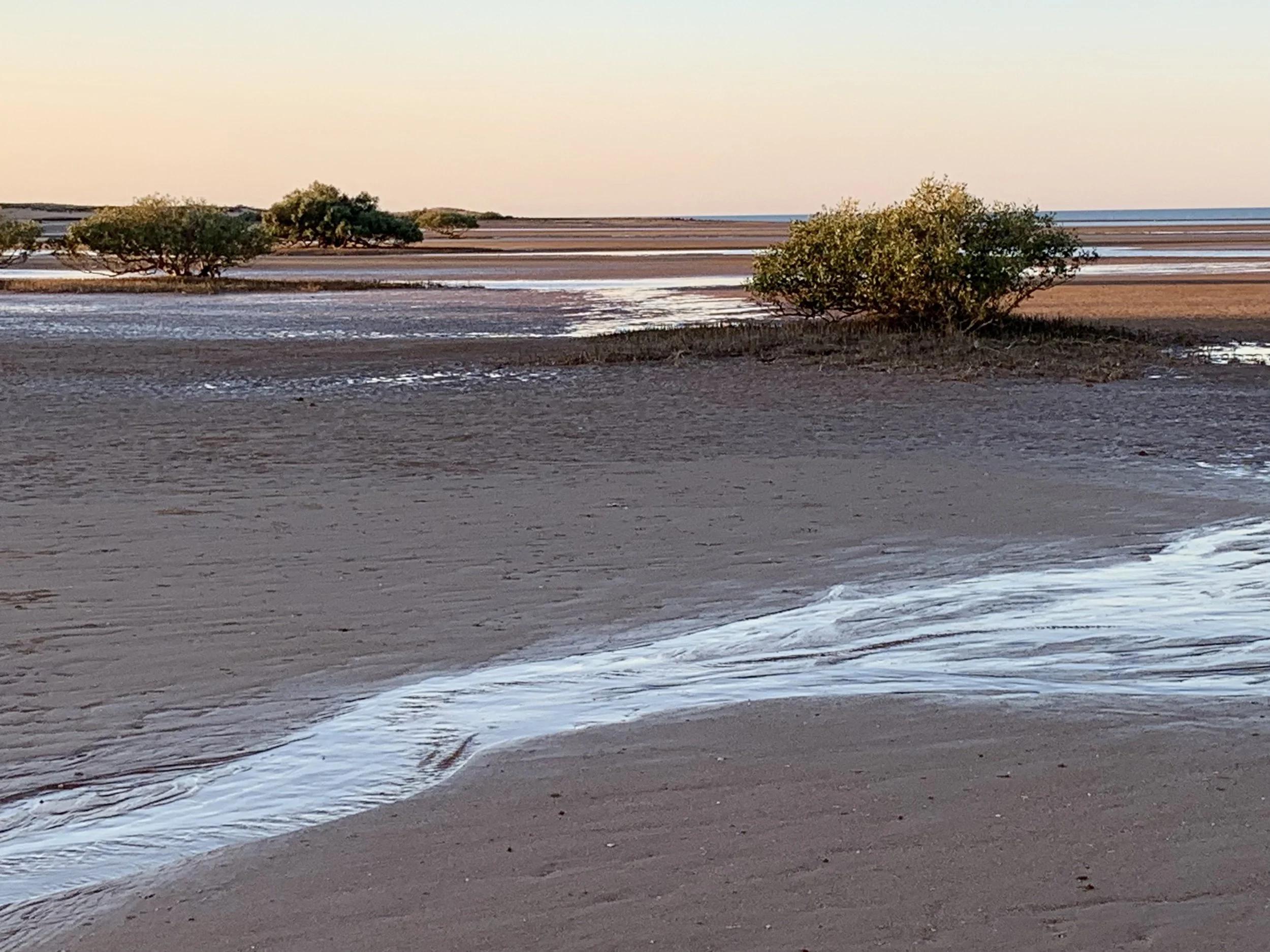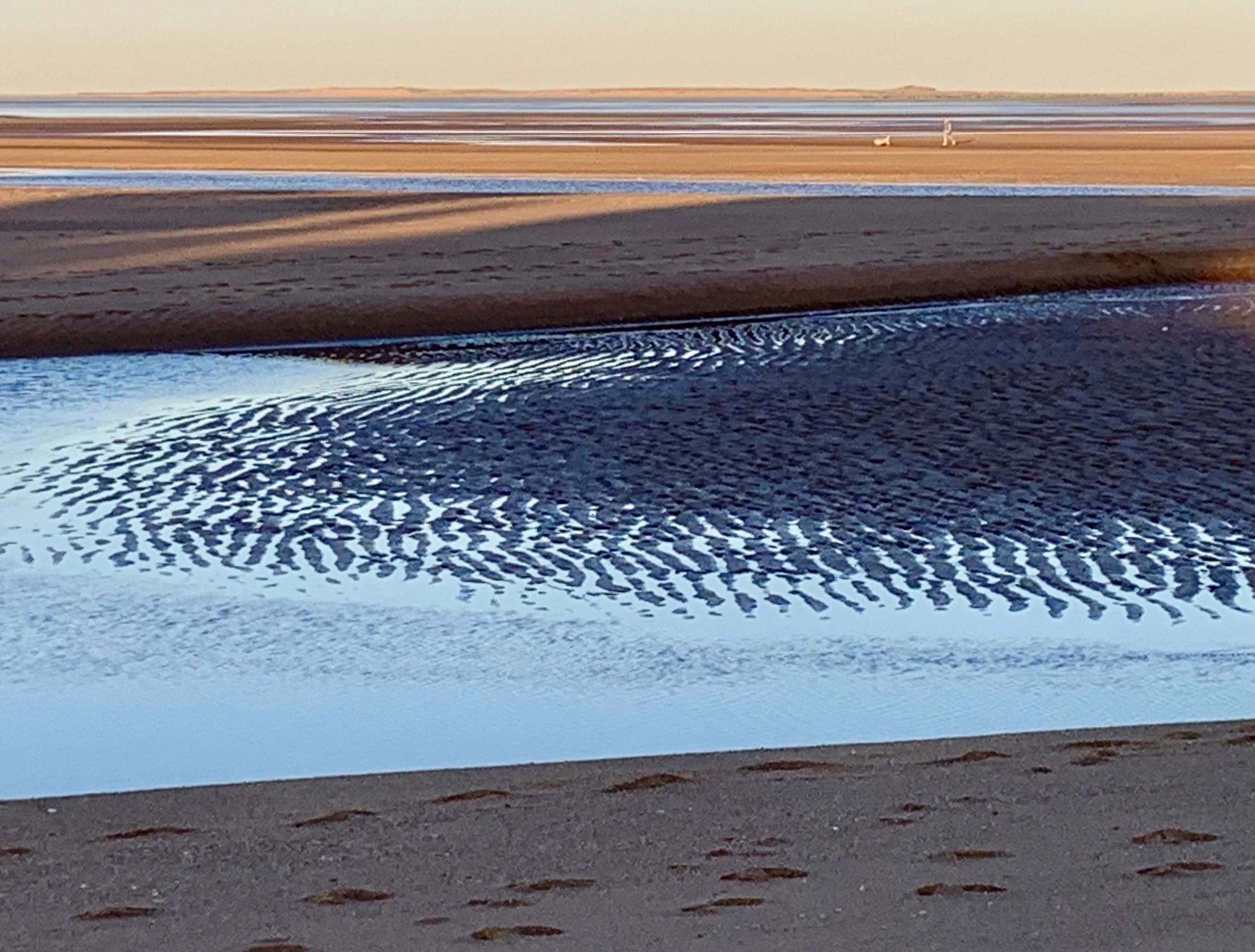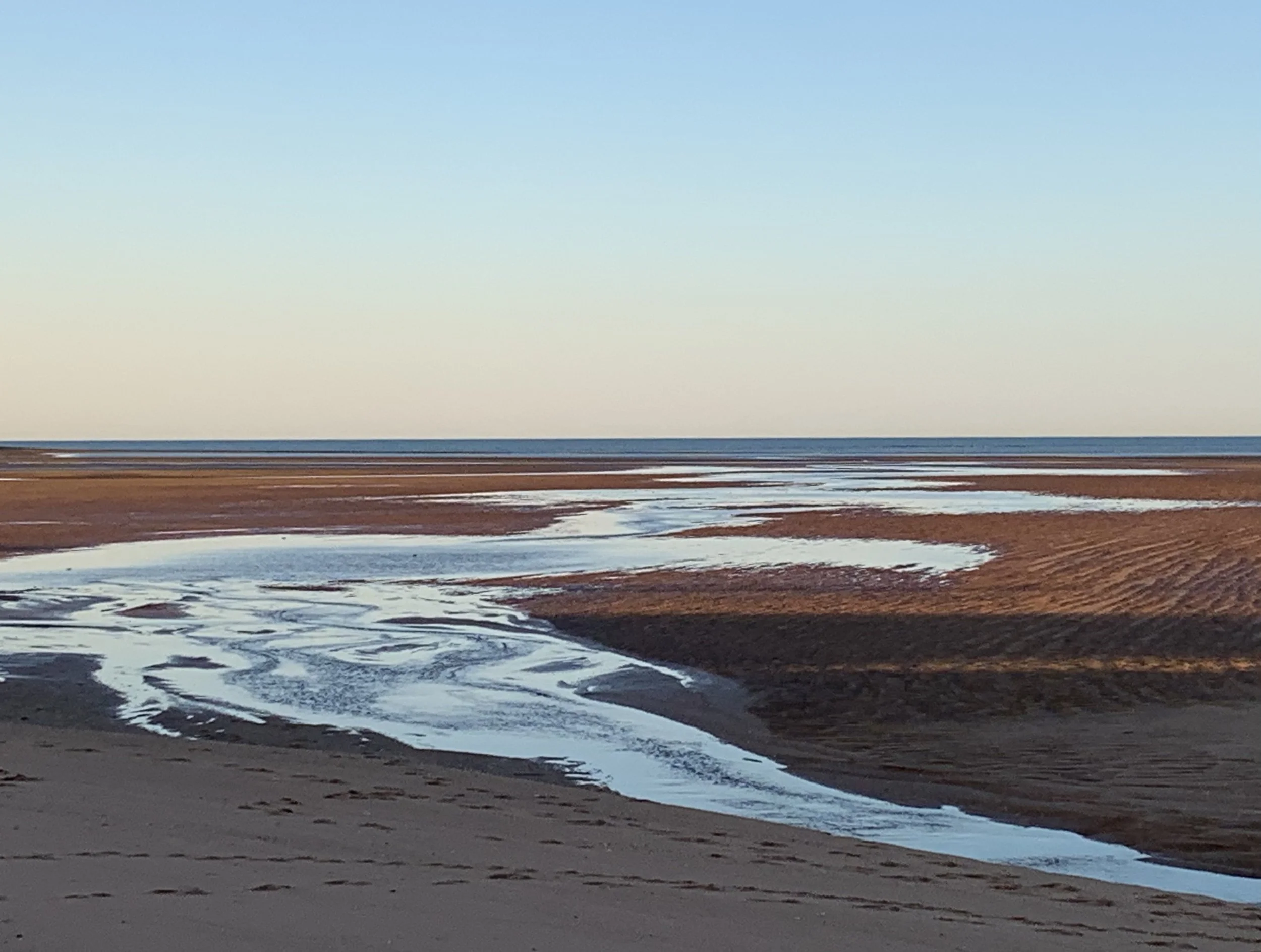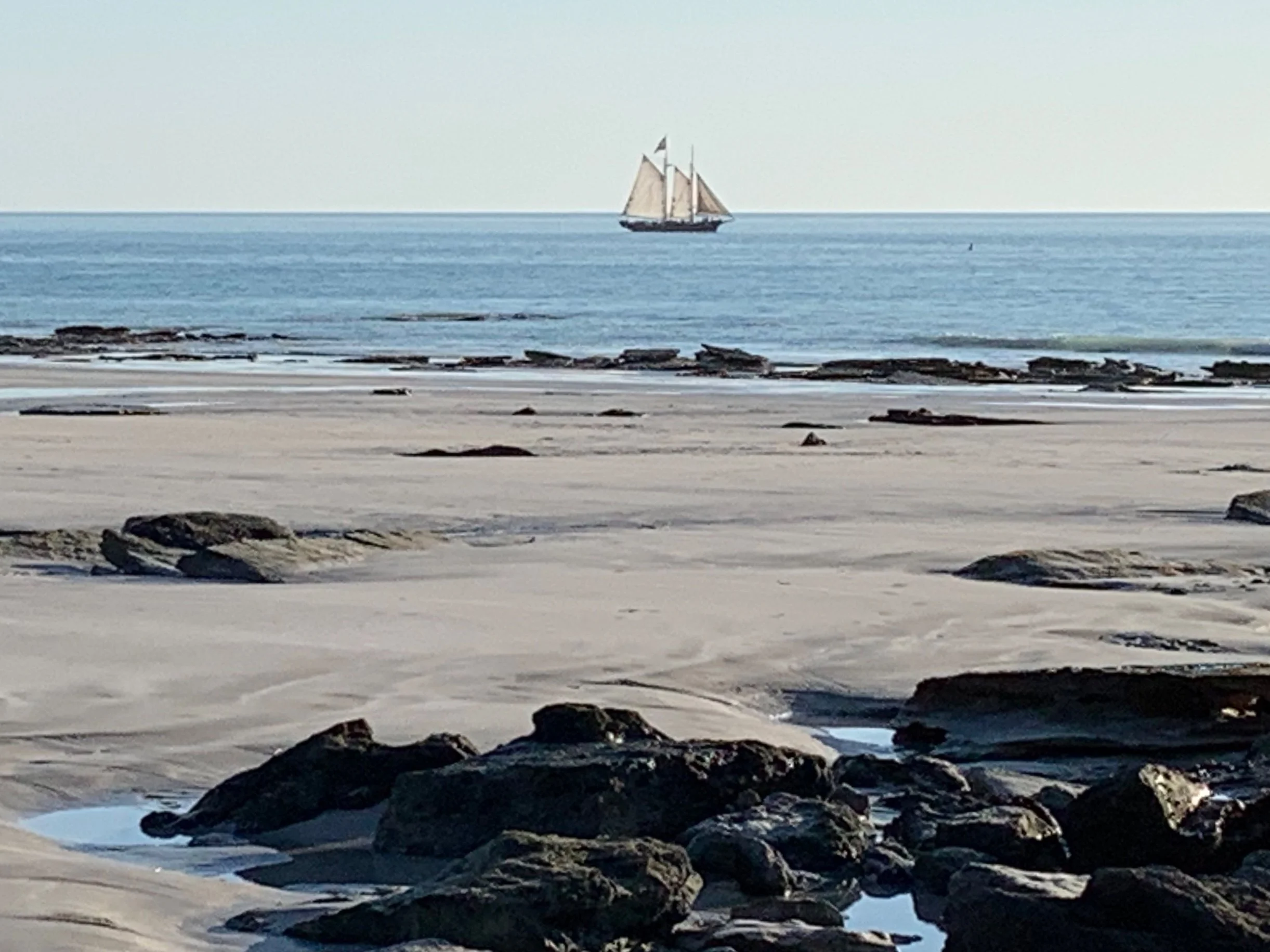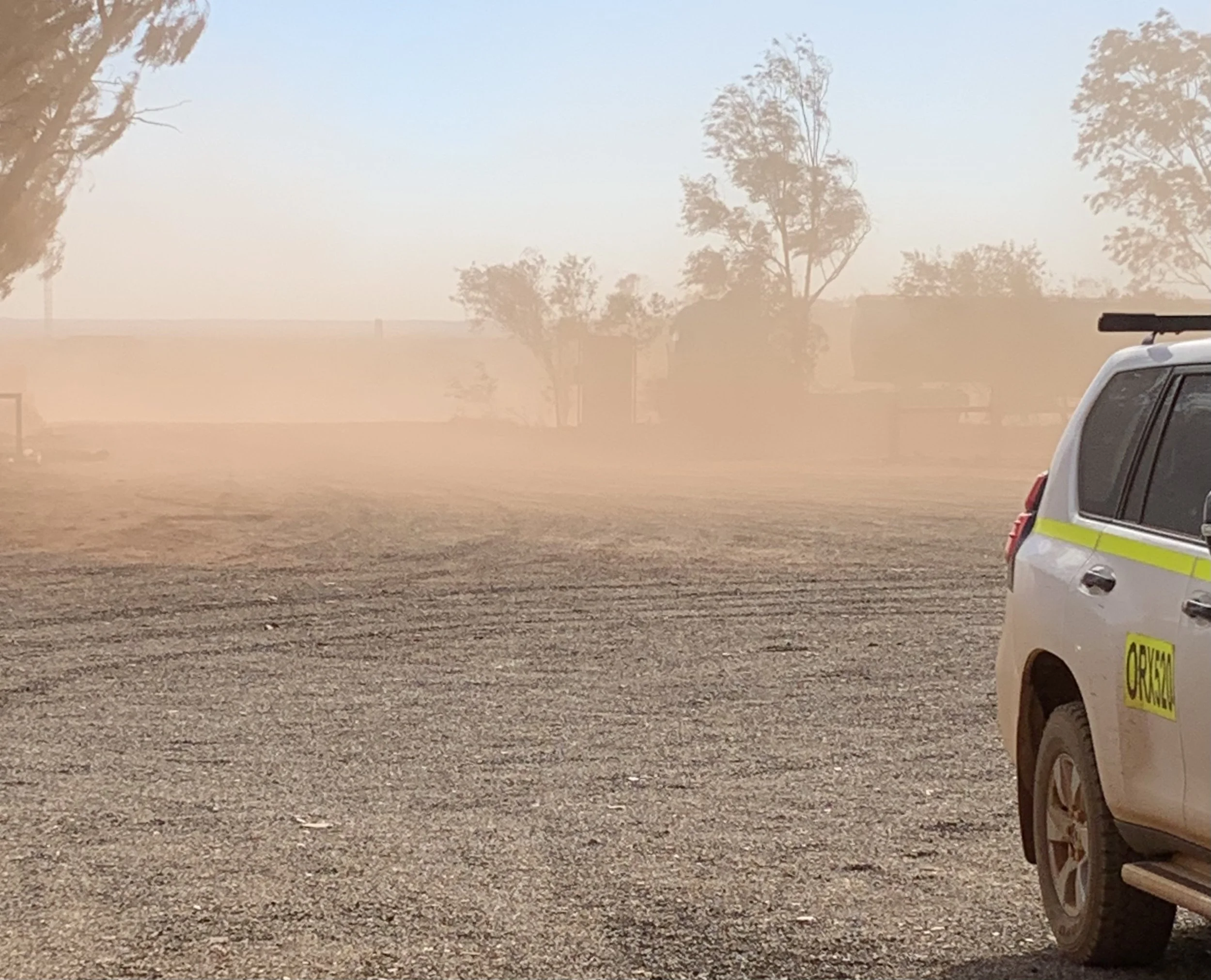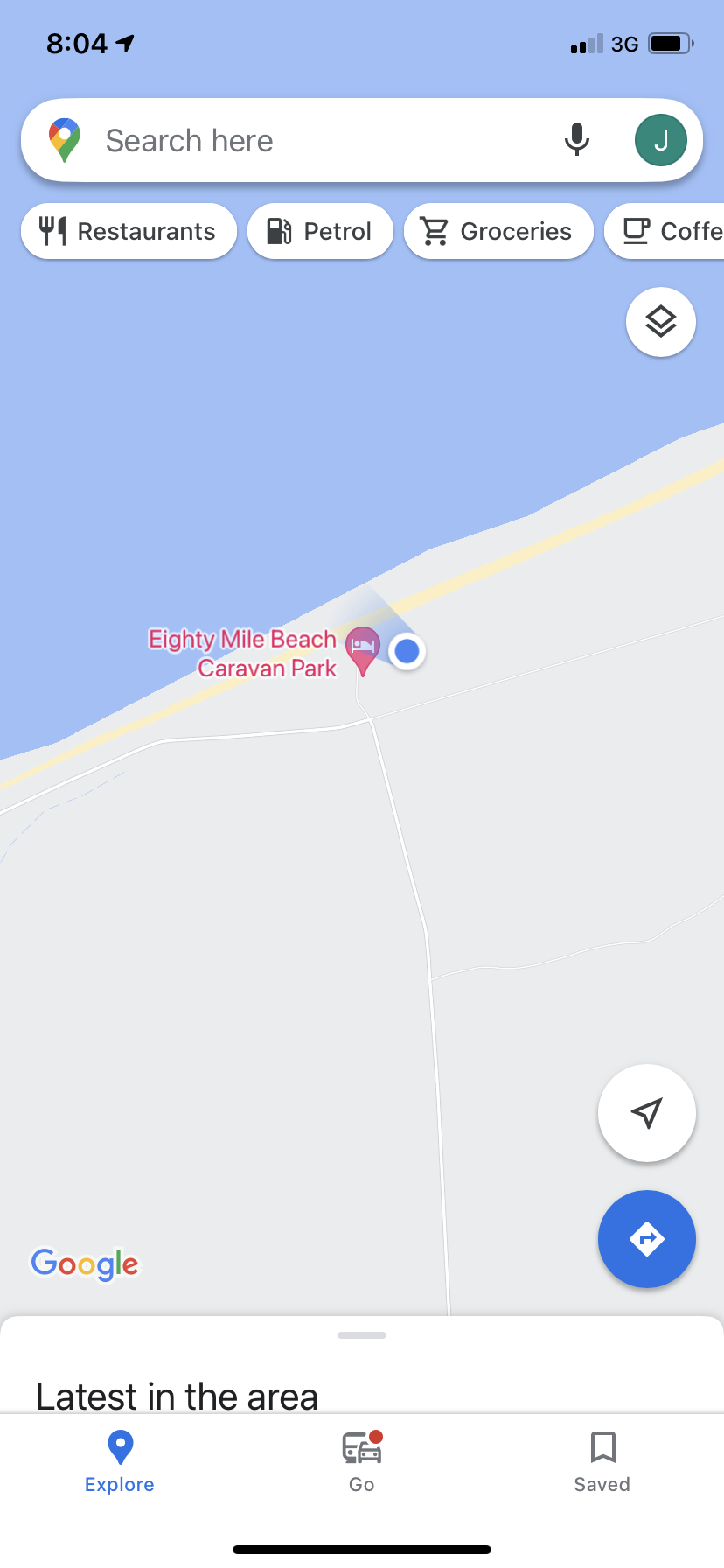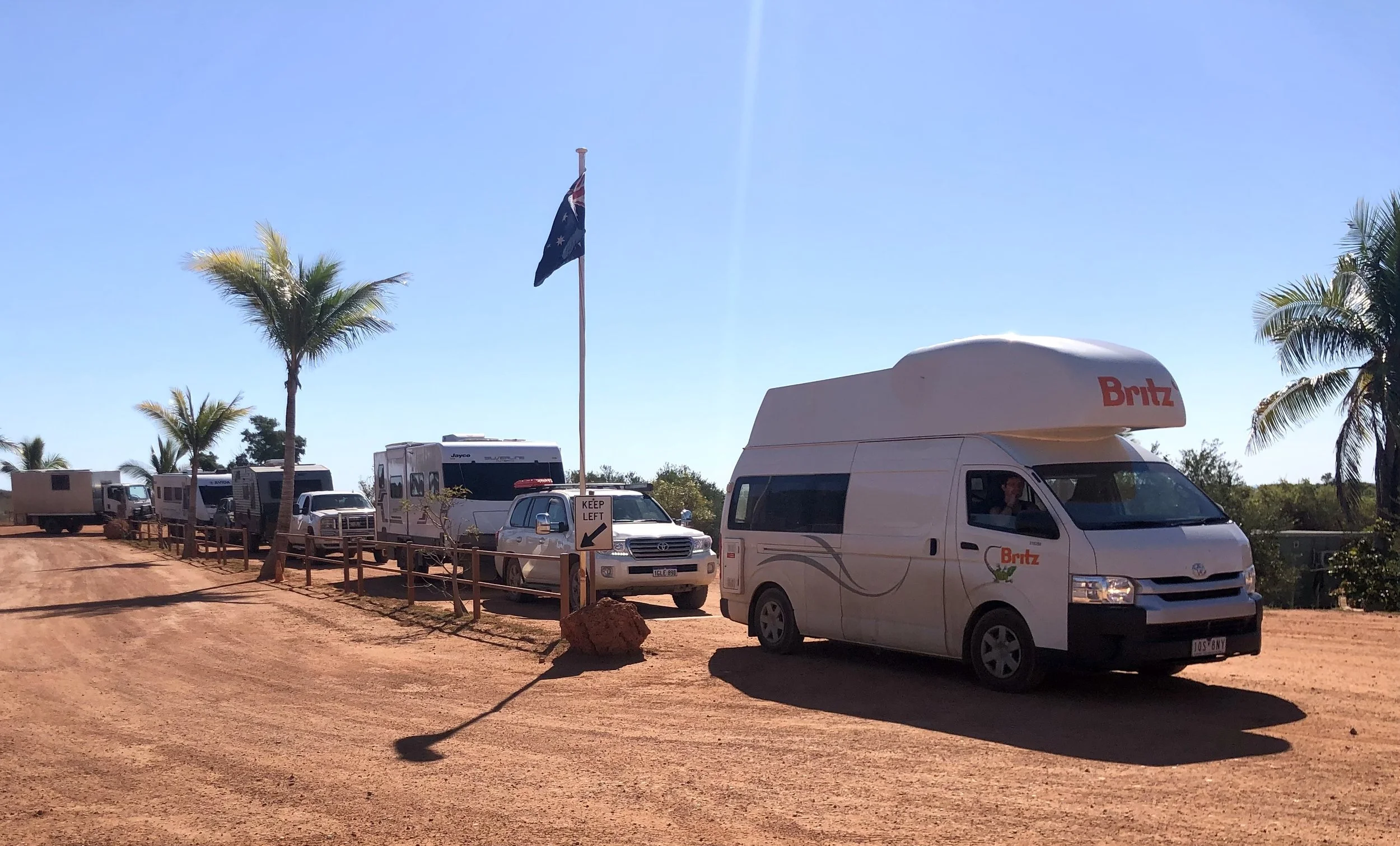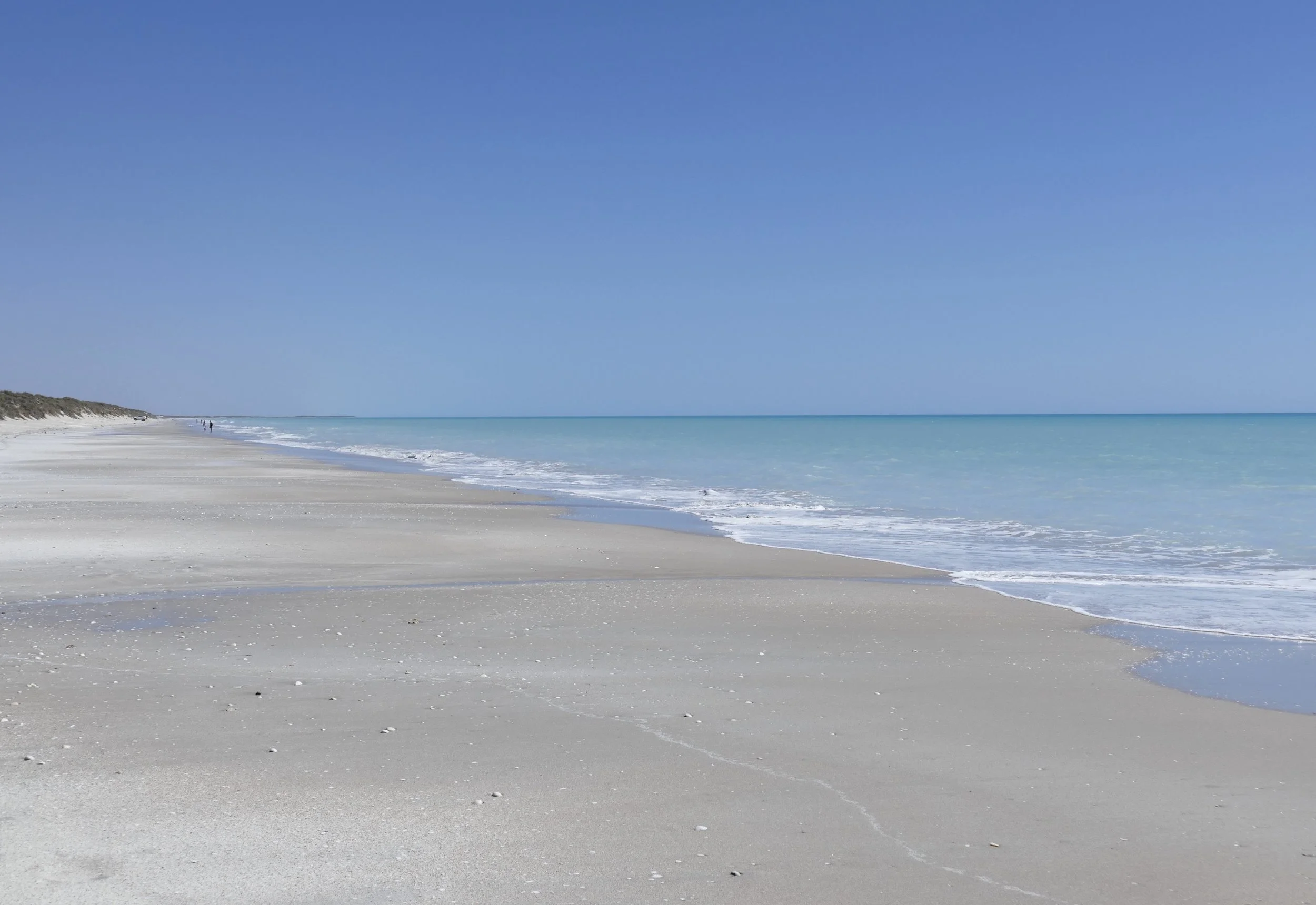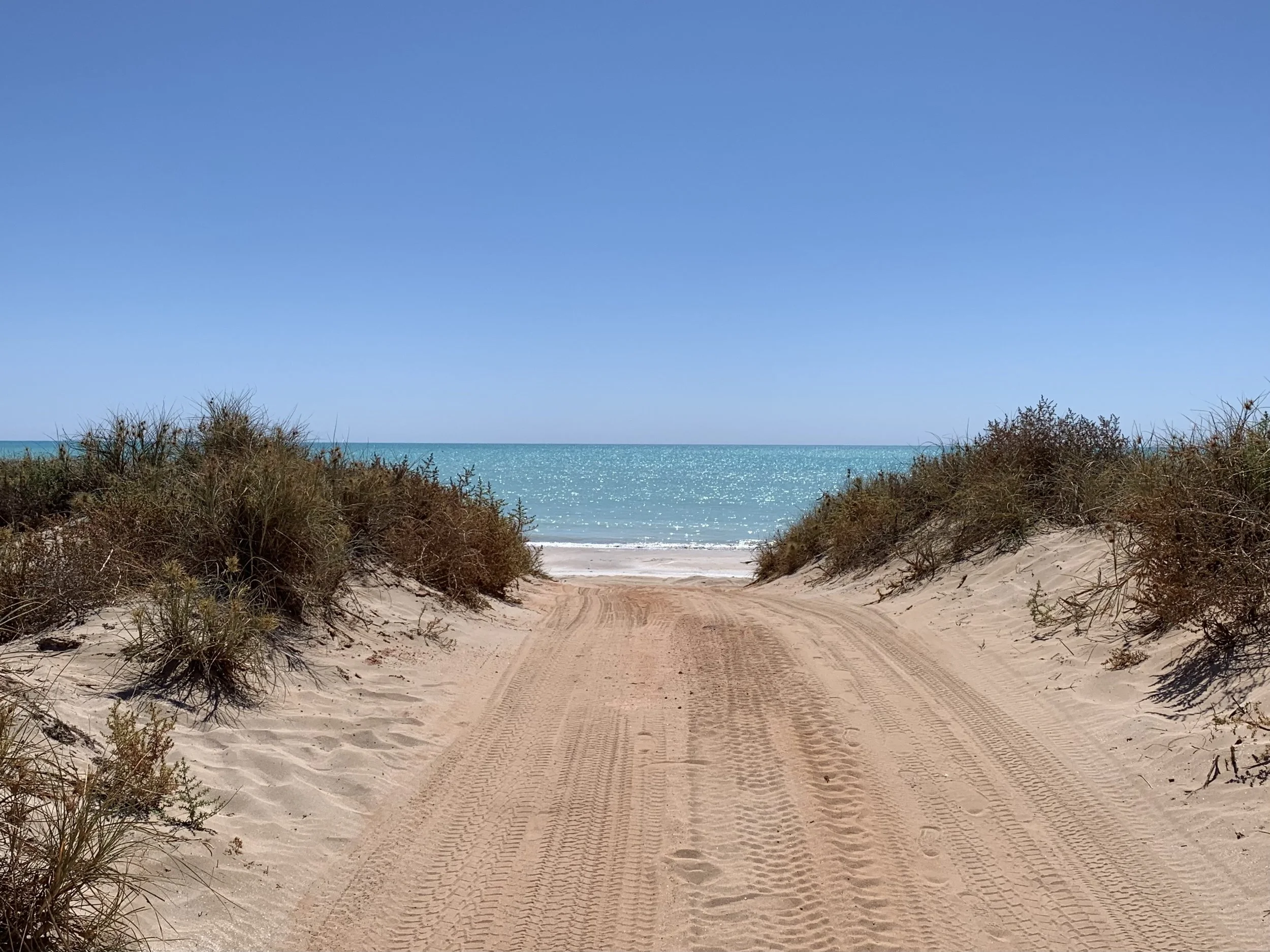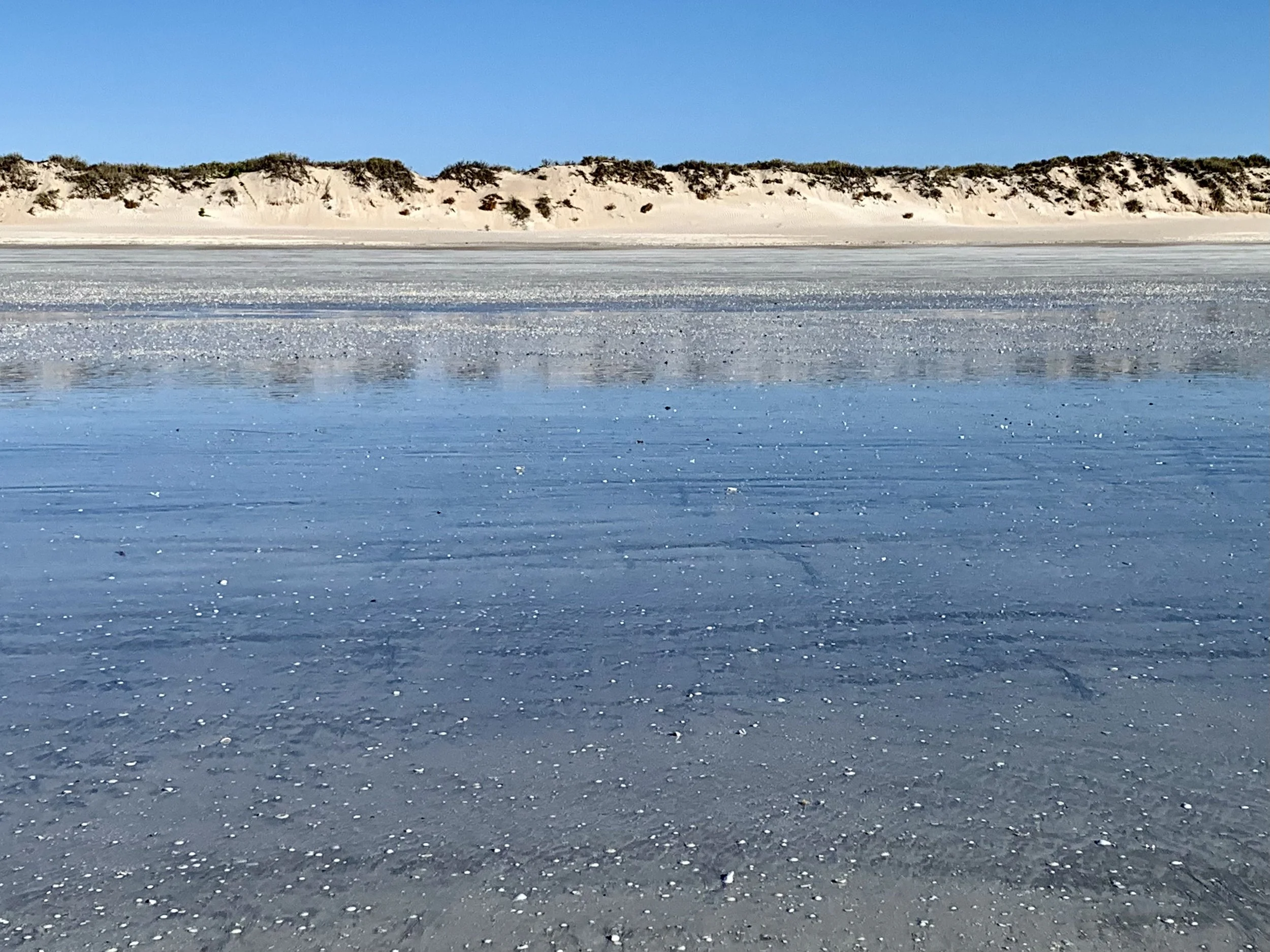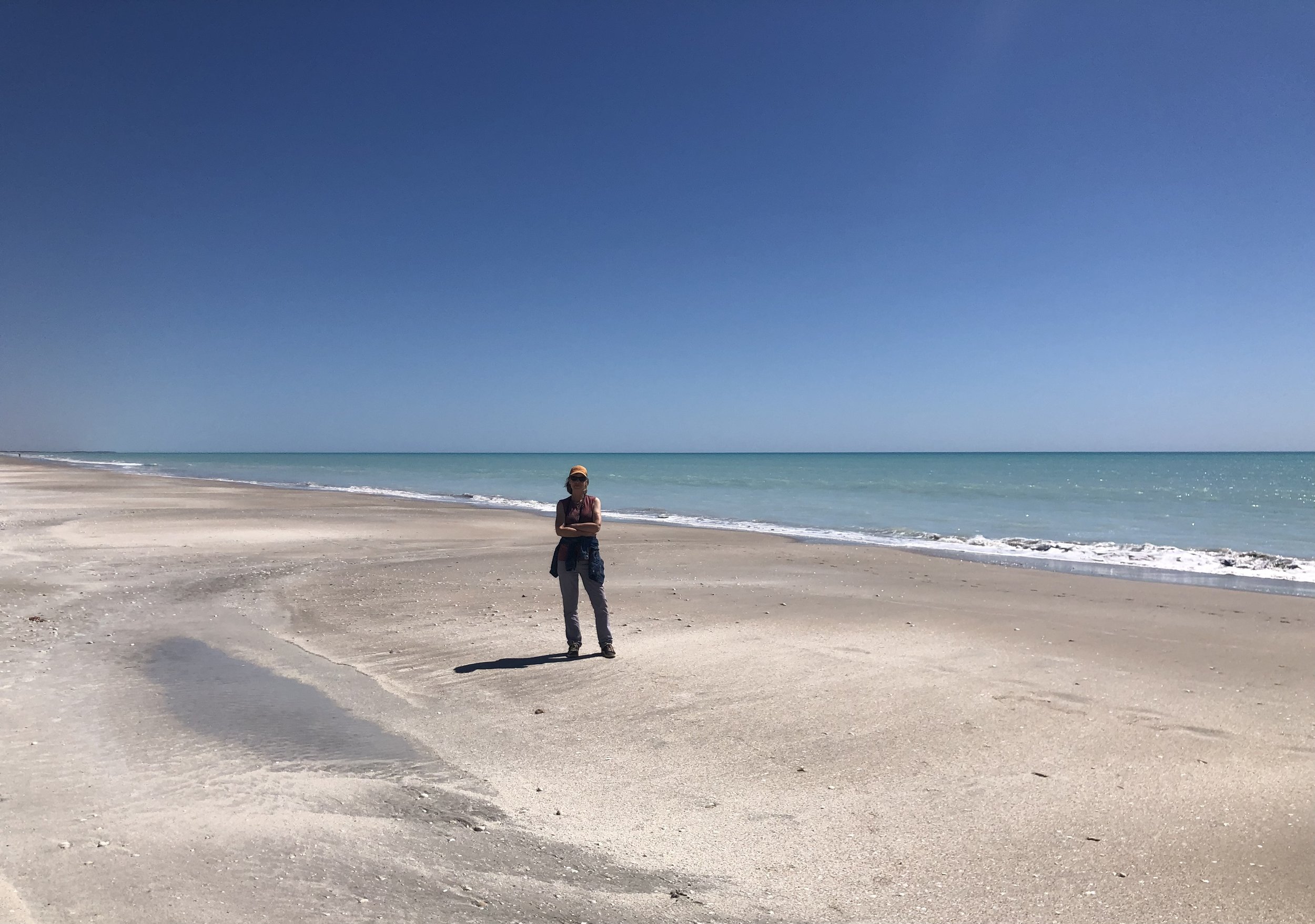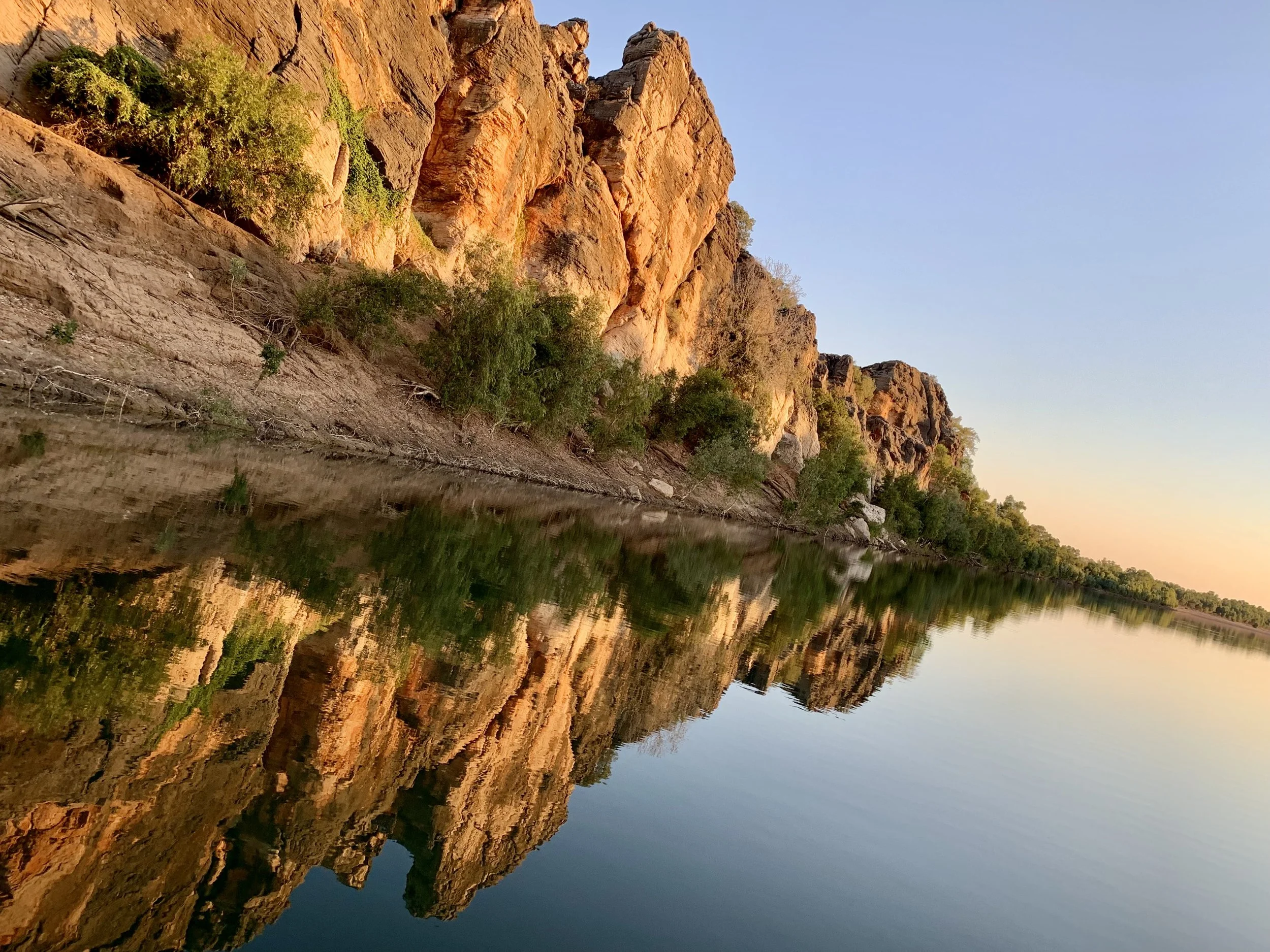Karijini and beyond
One day I will write seriously about trees; not only how beautiful and varied they are, or how clever, but their intrinsic value to Earth’s inhabitants, the human cohort of which would struggle, I suspect, to put a figure on how much a tree is worth. How often have you sheltered from a storm, or merciless hot sun, beneath a wide-spreading tree; picked fruits to keep you going while hiking; used leaves to soothe a skin irritation; or simply stepped back in awe of a tree’s size, structure or the fact that it still stands where it does?
Portrait of a gum
Talking of structure, this tree looks as if it has two trunks, one black and one white, and they appear close enough to share the same foliage. Other trees behind it exhibit the same black-and-white characteristic. It’s highly unlikely one limb would have been burnt to a crisp while another close by remained unscathed. I can’t explain this, but I’ll work on it.
In choosing pix to illustrate the Big Trip, I almost always go for landscapes; and obviously many of them feature trees. But trees deserve more than a passing mention. This tree, I’m fairly sure, is a Snappy Gum. I have a beautifully illustrated book – Australia’s Remarkable Trees, by Richard Allen and Kimbal Baker – which tells me that Snappy Gums are happy to live in the Pilbara region of Western Australia even though temperatures often climb above 45 degrees, and rainfall between August and November struggles to register 10 ml in the gauge. The book describes the Snappy Gum as the Pilbara’s most iconic tree: it doesn’t grow massively tall in the climate; and it shares the region’s stony plains with Spinifex, another well-known dry-zone stalwart.
This was a magnificent monster of a tree we came across a couple of days later, on our way from Port Hedland to Broome. Who could hazard a guess at the age of this giant, a thousand years old or twice that, with its massive girth and innumerable branches and twiglets?
Australian Boab
Beyond Karijini National Park there were huge tracts of empty Western Australia. The state occupies a third of the Australian continent, with few-and-far-between nuggets of interest or loveliness, but none qualifying for a whole post to itself, especially for a writer in a hurry to get there (finish a project). So, here are random bits of travelogue – from the diary, frequent Facebook entries, and my recollections.
Day 62 Karijini to Auski Roadhouse Hot and sunny
I was awake at 05:30, and gave up on sleep soon after. I thought a shower might wake me up, but the superfine wide-reaching mist that resulted from pressing a feeble button was neither substantial nor hot. I hate a sputtering shower that might give up the ghost at any moment, leaving me soapy and cold.
We’d paid a lot of money to stay at Karijini Eco Retreat for a special treat – that is, not in The Van – and it was lovely, but our room was essentially a donga with a comfortable king and fabulous fabrics. (A donga is a portable cabin used in remote areas, especially by the mining and construction industries.) It was a walk away from a toilet, however, along a path I hoped was not shared by too many Aussie creatures of the night. (As we walked out next morning, there was a metre-long snake warming up by the path!) The Eco Retreat’s restaurant, in contrast, was more trendy urban eatery than outback caff. Deserving of special mention was the gin-cured Gold Band Snapper with Kakadu Plum, Wattle Seed and Desert Lime, my main course at dinner – essentially raw, but bafflingly delicious.
Next morning, and 30 minutes’ drive away, the half-rim walk at Dales Gorge was well within the capabilities of the sleep-deprived. The Gorge was verdant, with crazy Snappy Gums and shady groves of native Cypress. I thought Snappy Gum might be another, perhaps more local name for Ghost Gum, but I was wrong. To me Snappys didn’t look as stark or dramatic as Ghosts. I have a special place in my heart for Ghost Gums: the first time ever I saw them was in Queensland’s far west, where their stark white trunks were standout against blue sky and red earth.
We walked a bit further on from Dales Gorge Lookout to Circular Pool Lookout (below). It was difficult to see into the deep, and impossible to get the exposure right for a pic of both rim edge and far-below, but I liked this cropped version in any case. There was a steady drip-drip into nothing I could see but assumed was a pool somewhere in the direction of the centre of the Earth.
Circular Pool, Dales Gorge
I’ve read recently that Circular Pool is permanently closed following storm damage and rock falls more than a year ago in 2023. So make sure you check with karijini@dbca.wa.gov.au if you’re planning a visit, to avoid disappointment.
The Bush in early morning
Snappys, not Ghosts
Countless spinifex hummocks
♫ ♫ Road train, road train, goes so slow ♫ ♫
Day 63 Auski Roadhouse to Port Hedland Hot and sunny
Instinctively I knew we should avoid Port Hedland – roughly northeast of Hamersley and southwest of Broome – especially when I spotted extra-long bulk ore carriers. But I do love a big ship, which surely comes from years accompanying my father on early morning walks around harbours or docks wherever we were holidaying.
The drive up the 95 to join the North West Coastal Highway (1) had been anything but relaxing. What seemed like hundreds of empty road trains were hurtling south to collect more ore; while full, desperately slow, heavily laden versions were going in the same direction as we were. Our campsite for the night was a little way out of Port Hedland, but not far enough away to escape the port’s bright lights and background industrial hum pretty much 24/7. We walked into the nearby dunes and I took pictures of pleasing sand patterns and dune-stabilising beach spinifex.
Tankers and mangroves
Beach Spinifex
Sand art
More mangroves
We were unlikely to ever have chosen a Twilight Industry Tour of the world’s largest bulk exporting port, but the industrial feel of Port Hedland was inescapable. It continued the theme of Tom Price, four days ago, but felt a world away from Karijini, only three days beforehand. This strange time distortion I put down to my distaste of most things industrial, especially on a trip-of-a-lifetime such as this, combined with my yearning for the wild, always.
Day 64 Port Hedland to Eighty Mile Beach It was even hotter – a max of 36 degrees – and sunny, but Port Hedland didn’t look any more inviting the following morning. All roads were busy with dayglo-yellow striped utes buzzing about like irritating little flies, with high-flying sand flags flapping and all lights flashing, self-importantly. We followed an extremely wide load for ages: traffic coming in the opposite direction had to pull off the road completely, which took time, but eventually the huge thing turned off. Progress was easier from then on.
Sand flags are worth a mention at this point because in many situations they are now mandatory, particularly on beaches. There are different types, and they have to be fitted properly to your car or ute or whichever vehicle you’re driving. If you are crossing high dunes on a narrow track, sand flags provide an early visual clue that there’s something coming in the opposite direction. And if you need to take a fast run-up to avoid getting bogged in the sand, it’s useful that other drivers approaching the crest on the other side can see you.
We had originally planned to stay at Sandfire Roadhouse, where you couldn’t book, but decided to take a short detour to look at the famous Eighty Mile Beach, which was only a few kilometres of easy sand driving off the highway. Was it really 80 miles (128 km) long, I wanted to know. Pretty fab it was, so we queued for a short while to see if there were any spaces in the Caravan Park. We got one! The queue grew much longer later, so I reckon we were lucky. A neighbour we chatted to said there’d been many more people trying to get in, some of whom were temporarily placed in an overflow area with neither power nor water, to wait until a space became available, hopefully before they ran out of supplies. The campsite’s address was Eighty Mile Beach Caravan Park, 896 Eighty Mile Beach Road, Eighty Mile Beach, WA 6725. Here’s a useful locator map!
Eighty Mile Beach was known as 90 Mile Beach until 1946, when it was changed to avoid confusion with a beach of the same name in the state of Victoria. In fact, the beach is much, much longer, forming 140 miles (220 km) of coastline where Australia’s Great Sandy Desert reaches the Indian Ocean. It is an internationally recognised Ramsar site, being an important staging point for migratory shorebirds using the East Asian-Australasian Flyway.
I suspect I’ll regret not devoting a whole post to Eighty Mile Beach, which is a hell of a long beach by anyone’s standards. Unfortunately, I didn’t take enough pix.
Waiting in hope
Worth the wait – Eighty Mile Beach
It might have been while walking by the ocean here that I appreciated once more, as if any further proof were needed, that I would probably never come across as many spectacularly fabulous beaches as I had on my travels around Australia over more than a decade. As ever, sun-filled photos usually speak louder than time-worn words.
Anticipation
Reflection
How I will always remember Australia
An endless empty beach seems like a dream to me now. And some days in my life beyond, such an image is almost physically painful to look at, so great is the longing to feel that sun on my skin and and stand and stare in such solitude.

